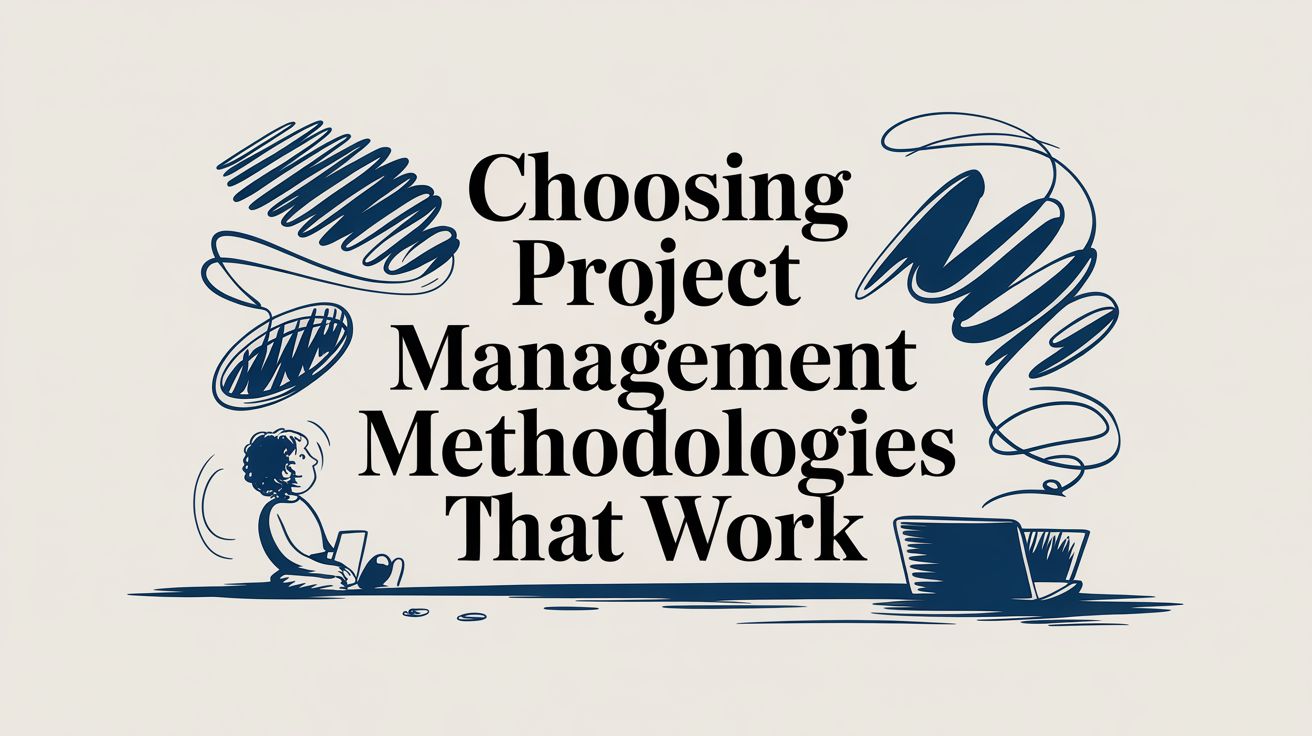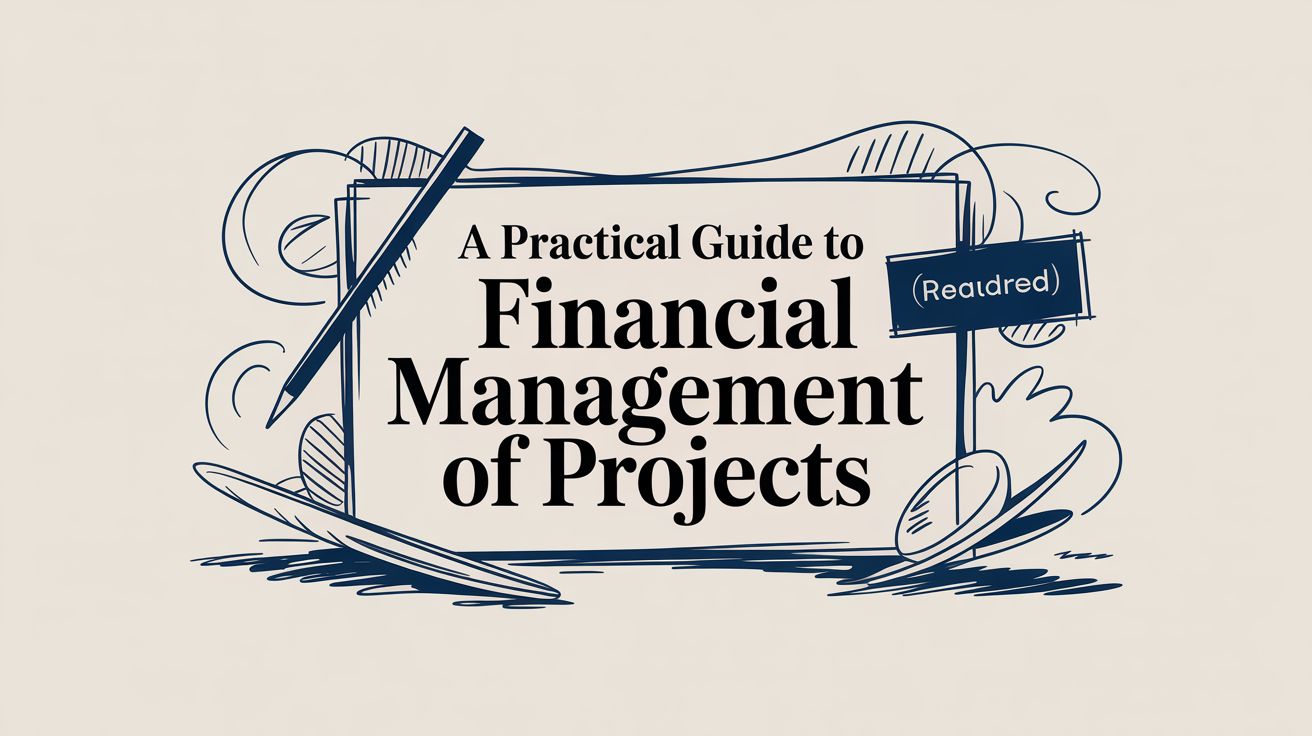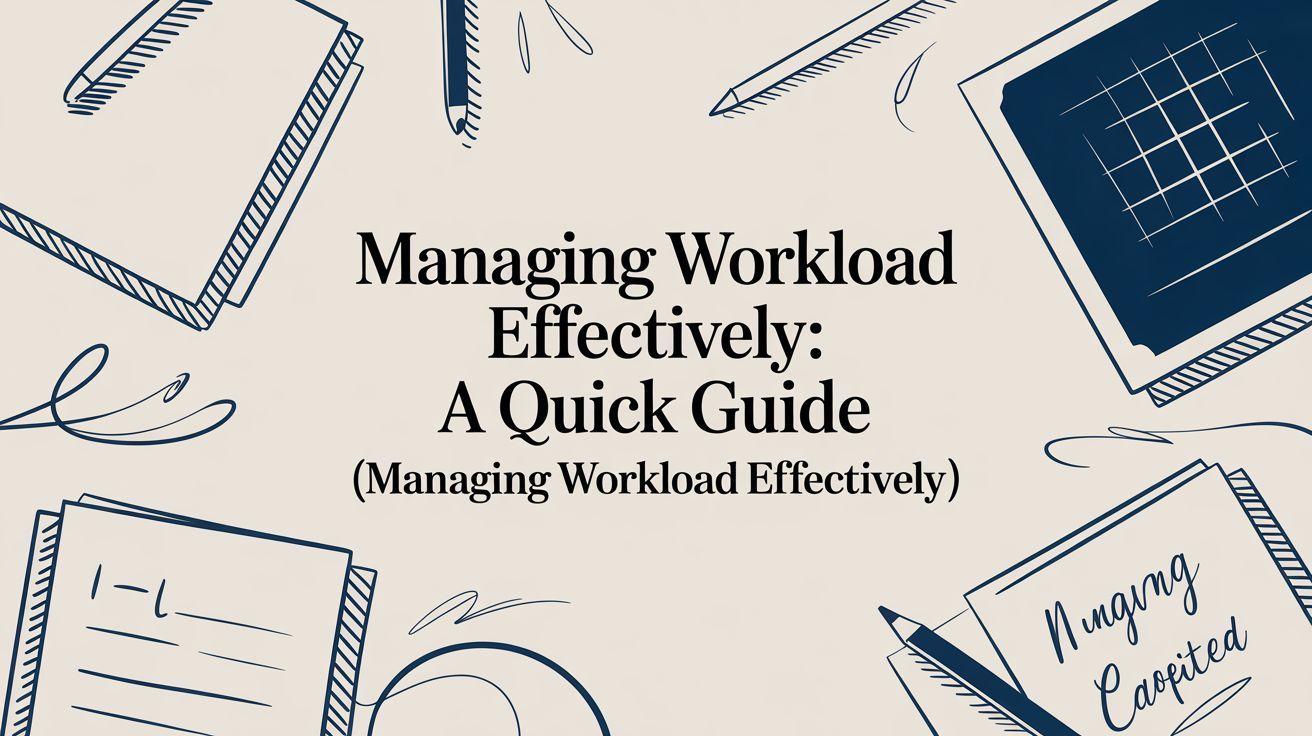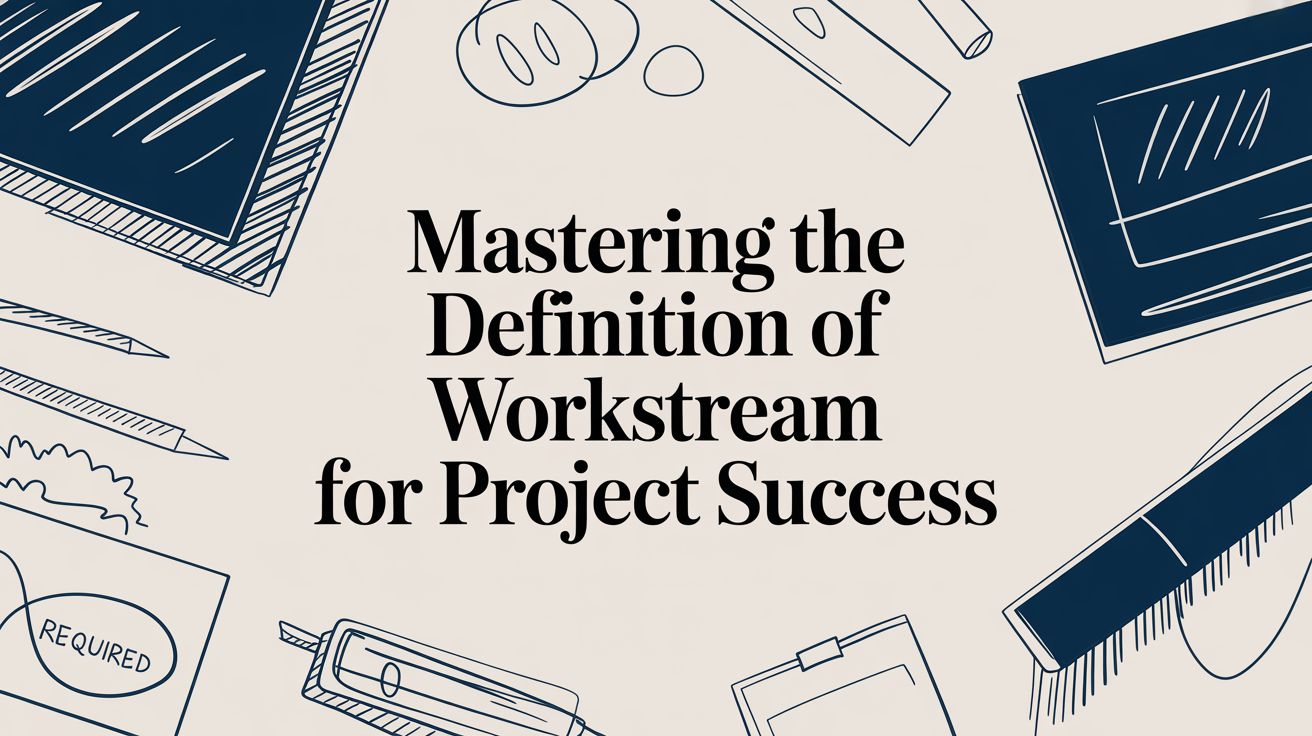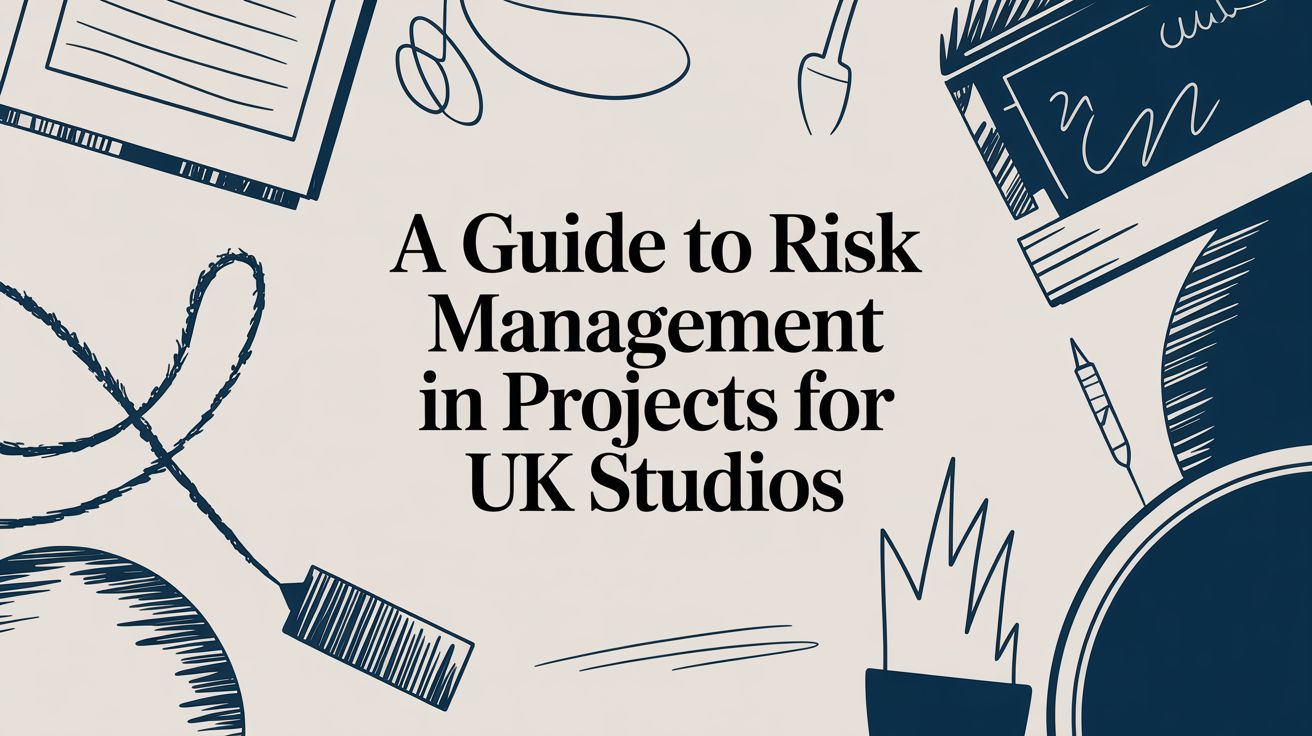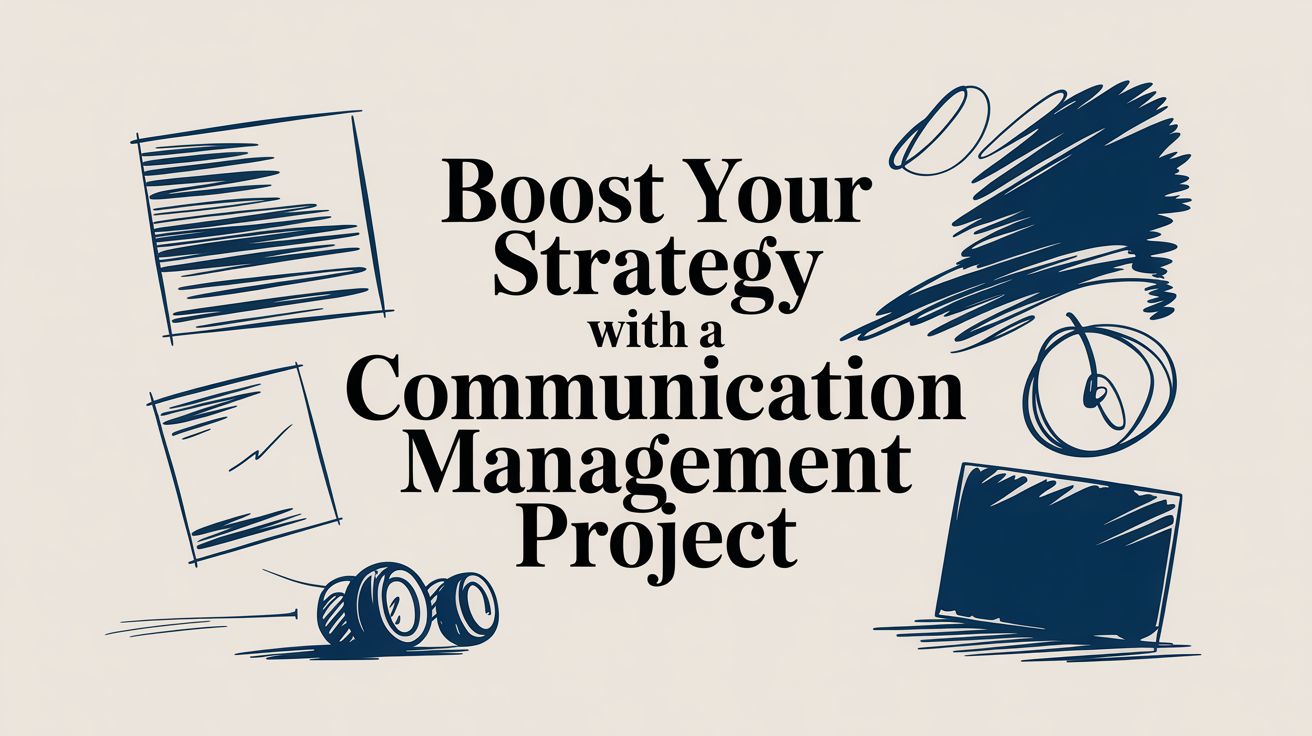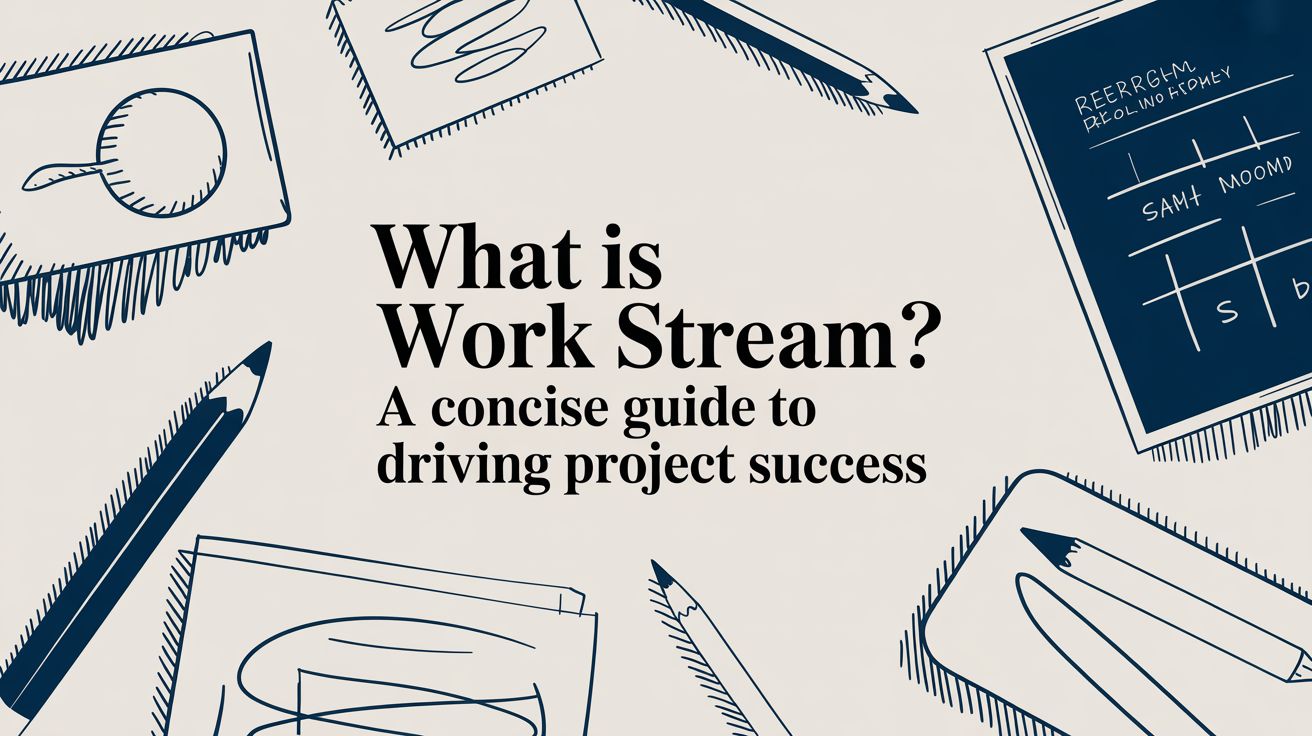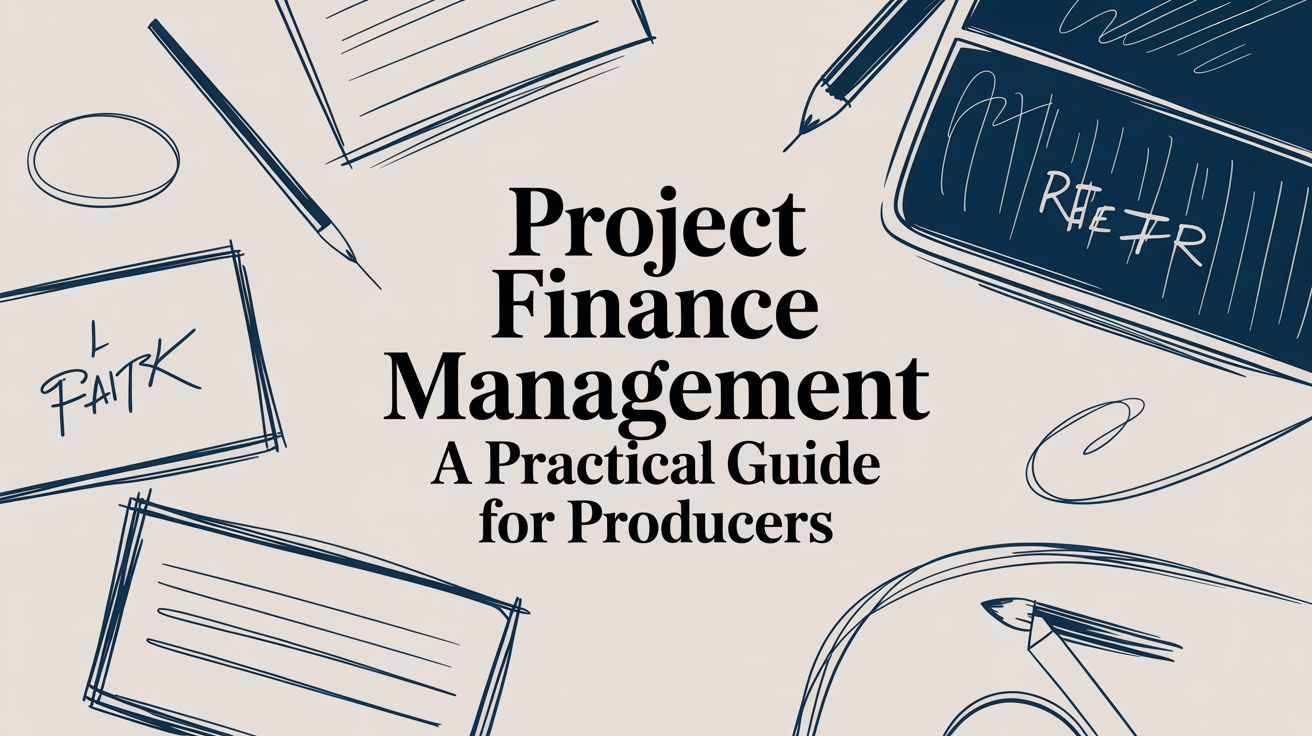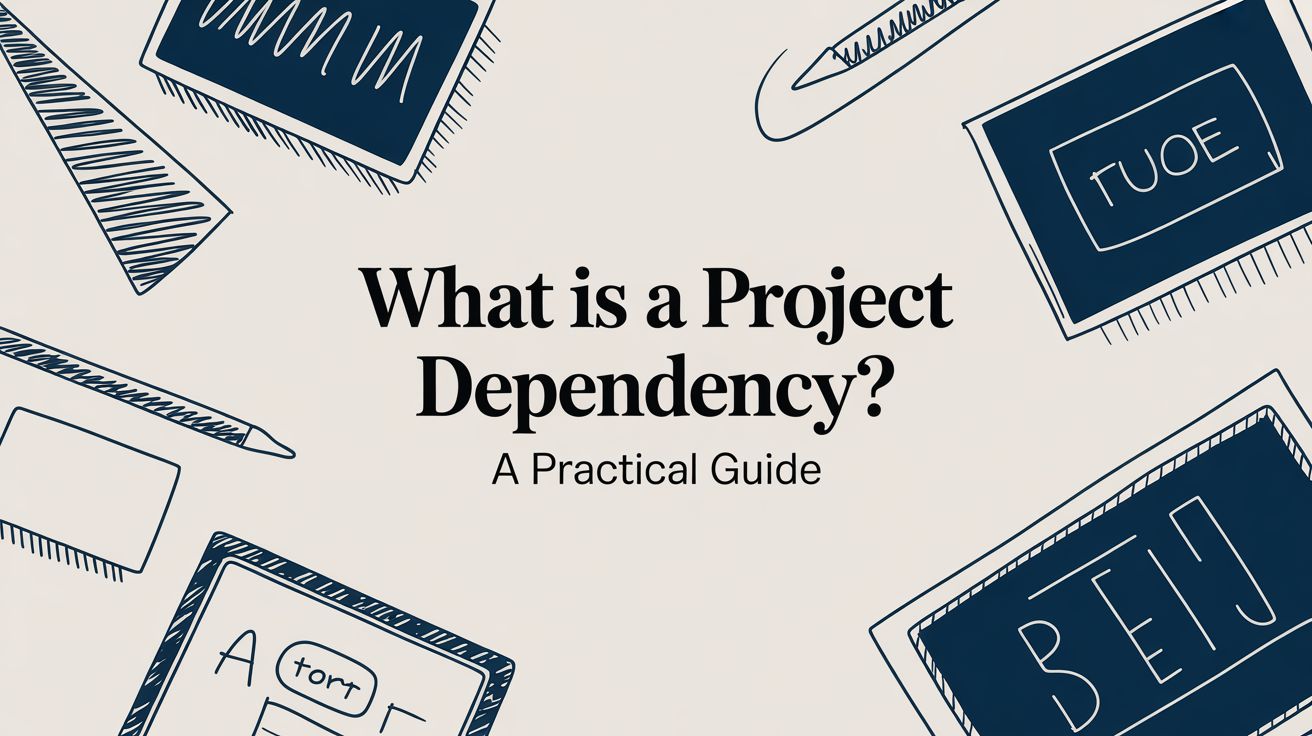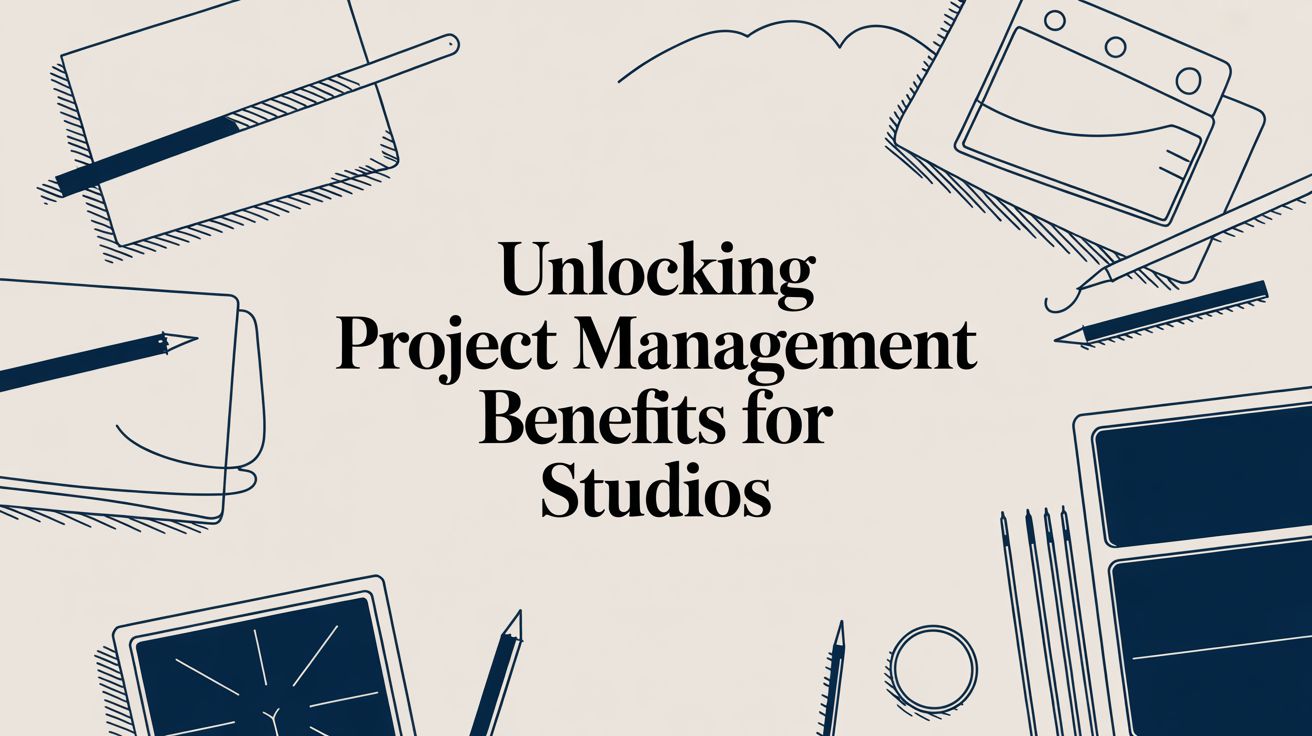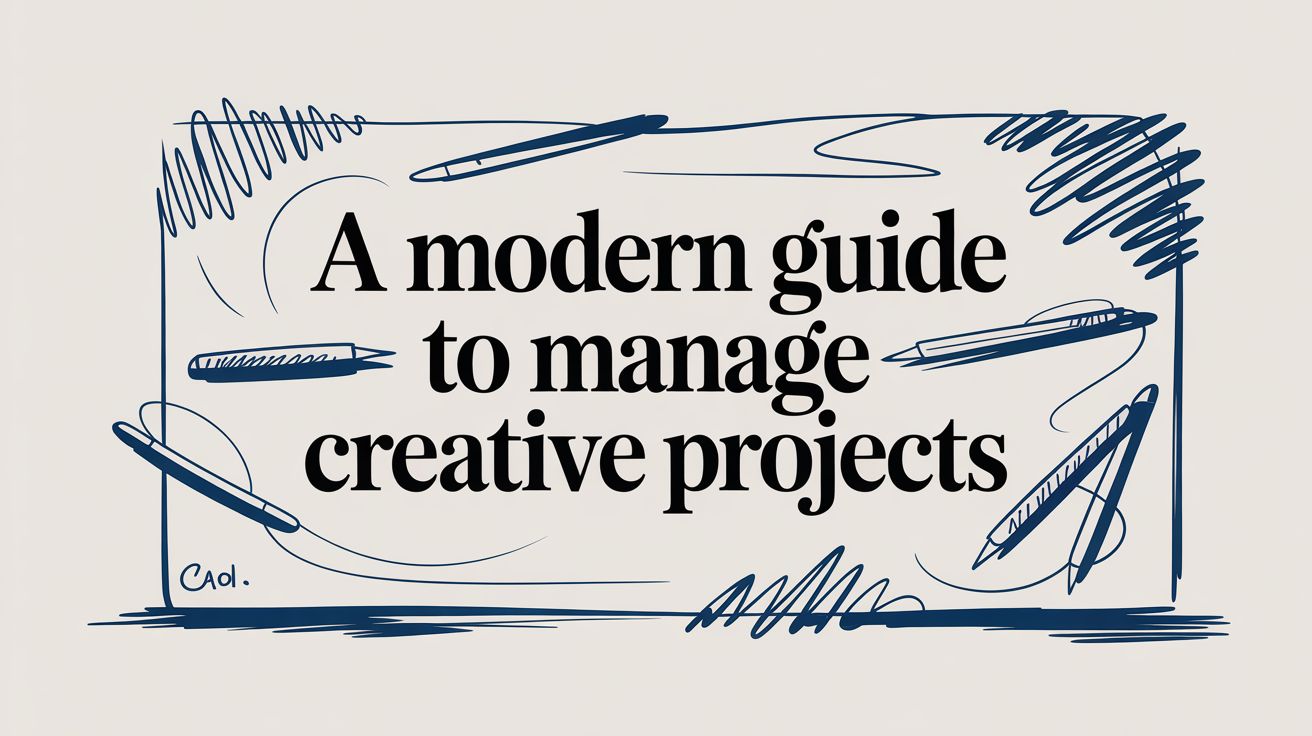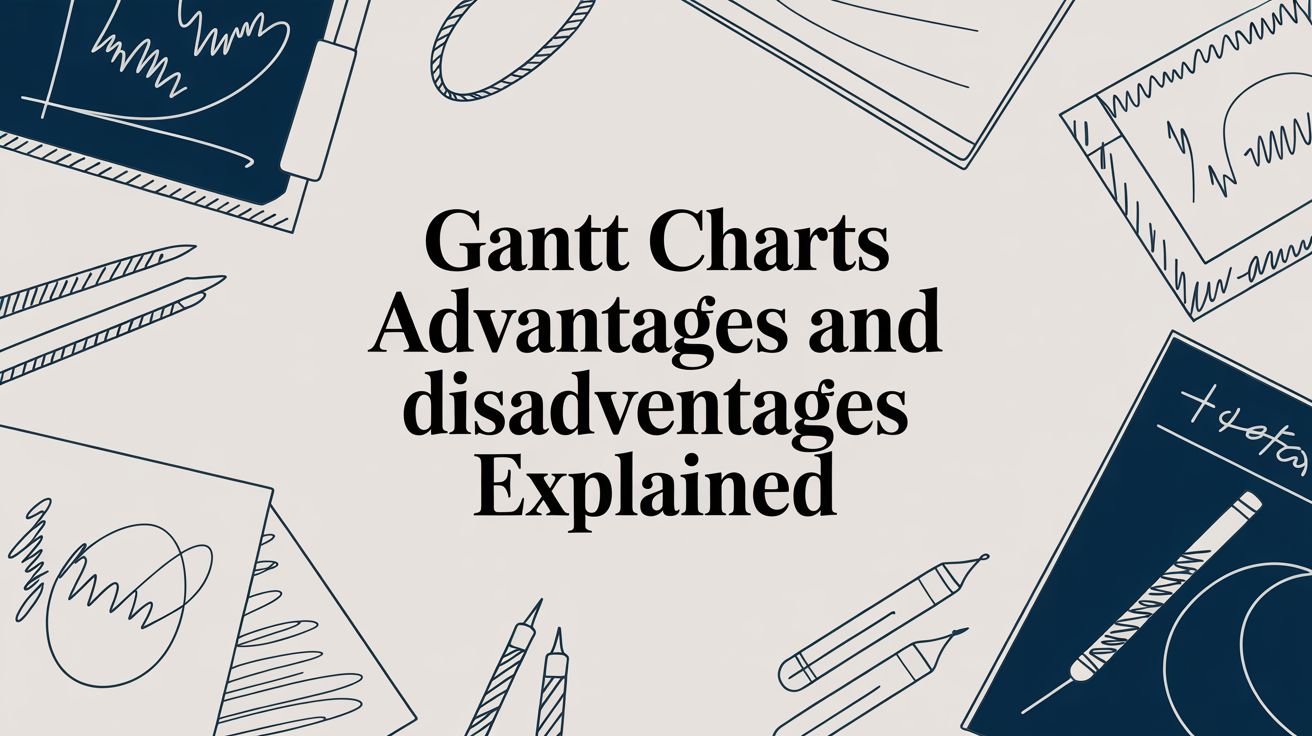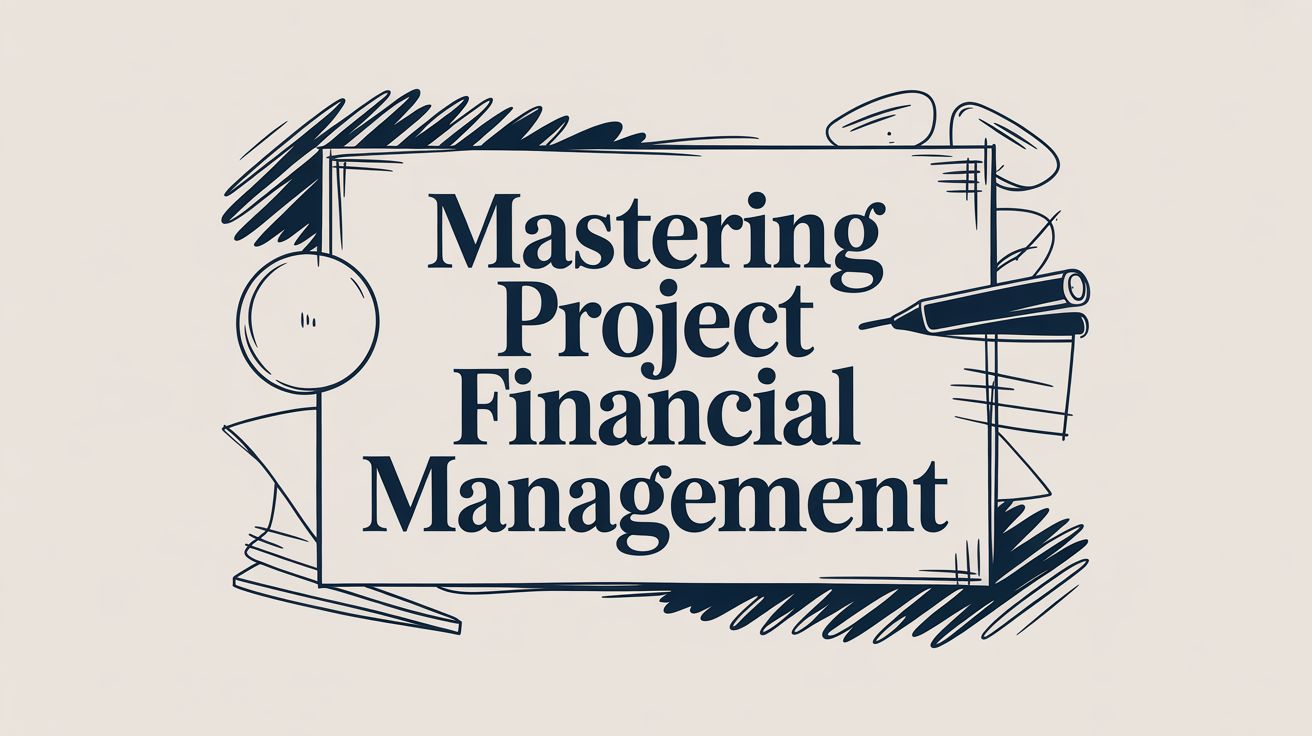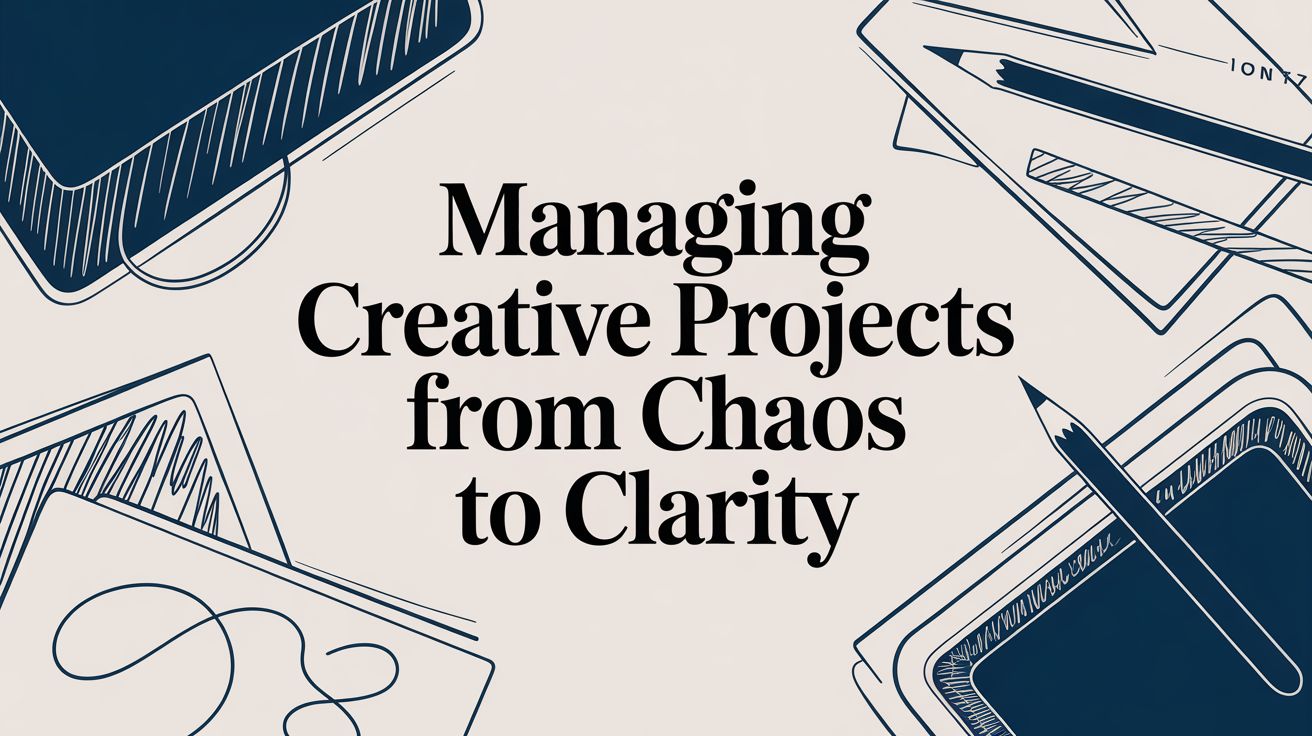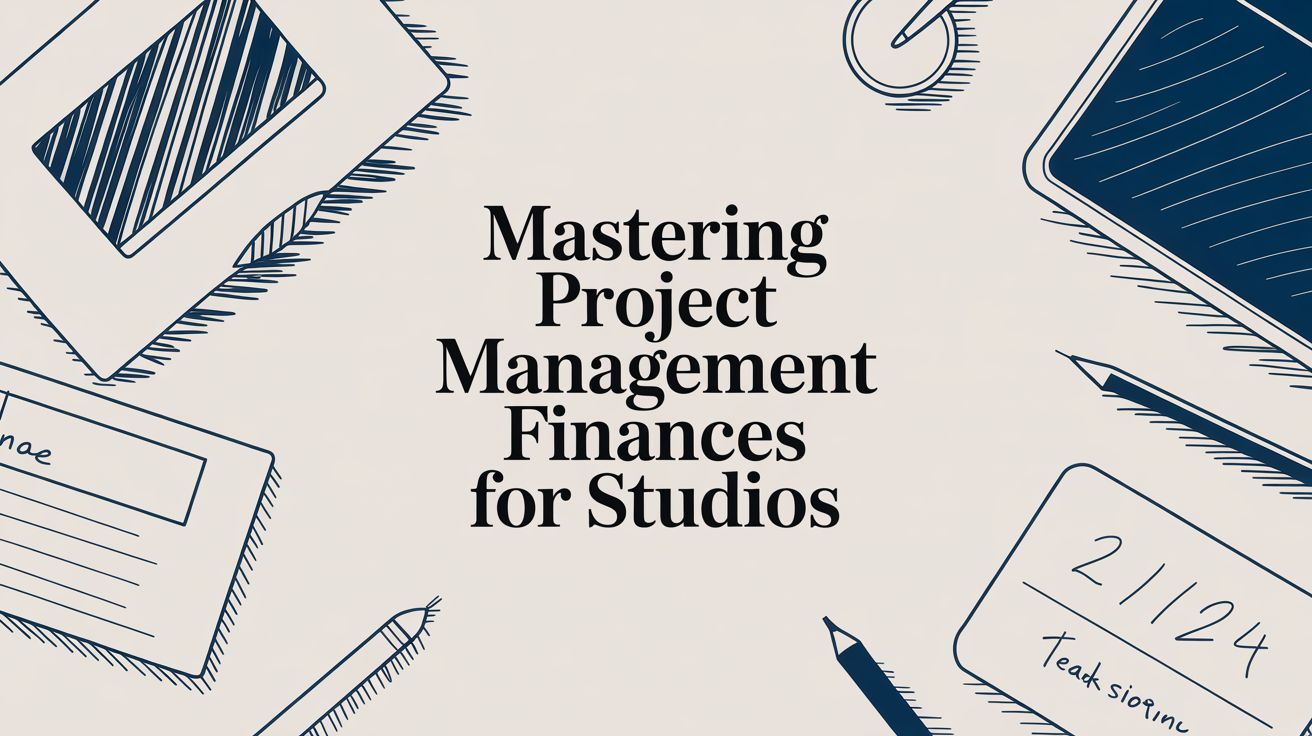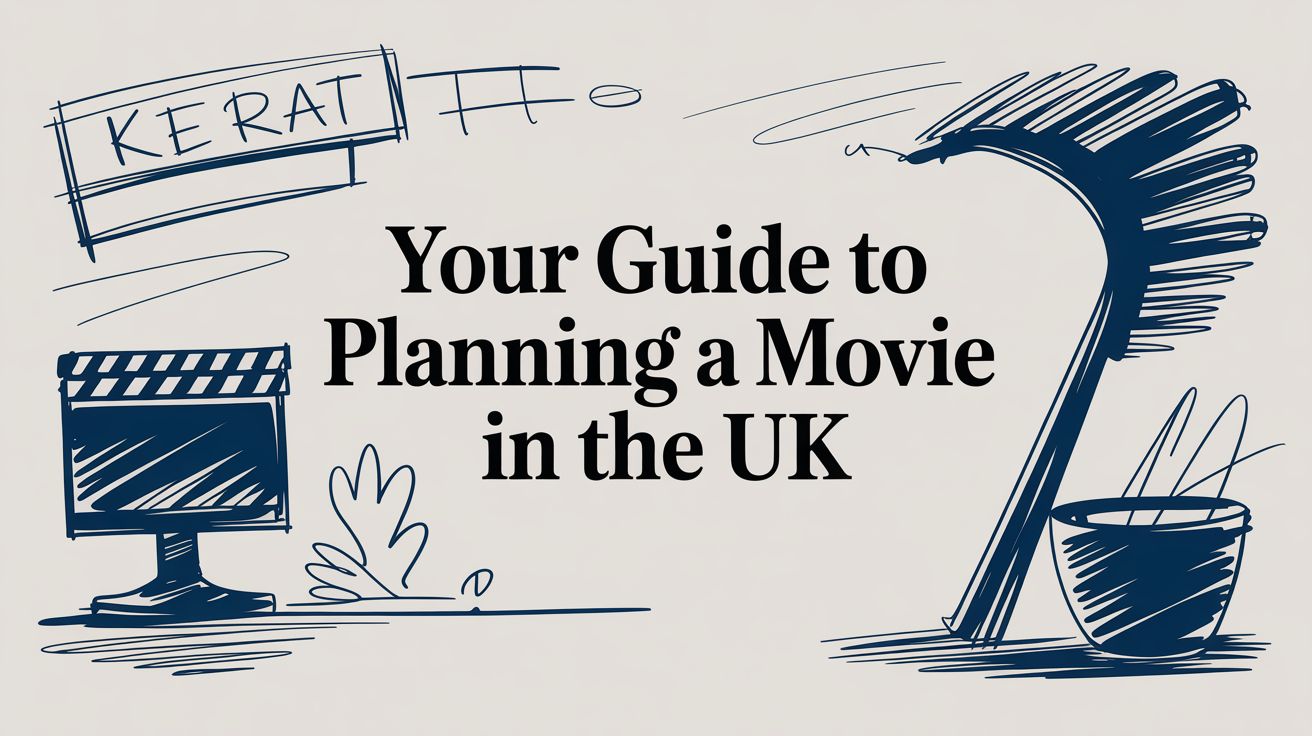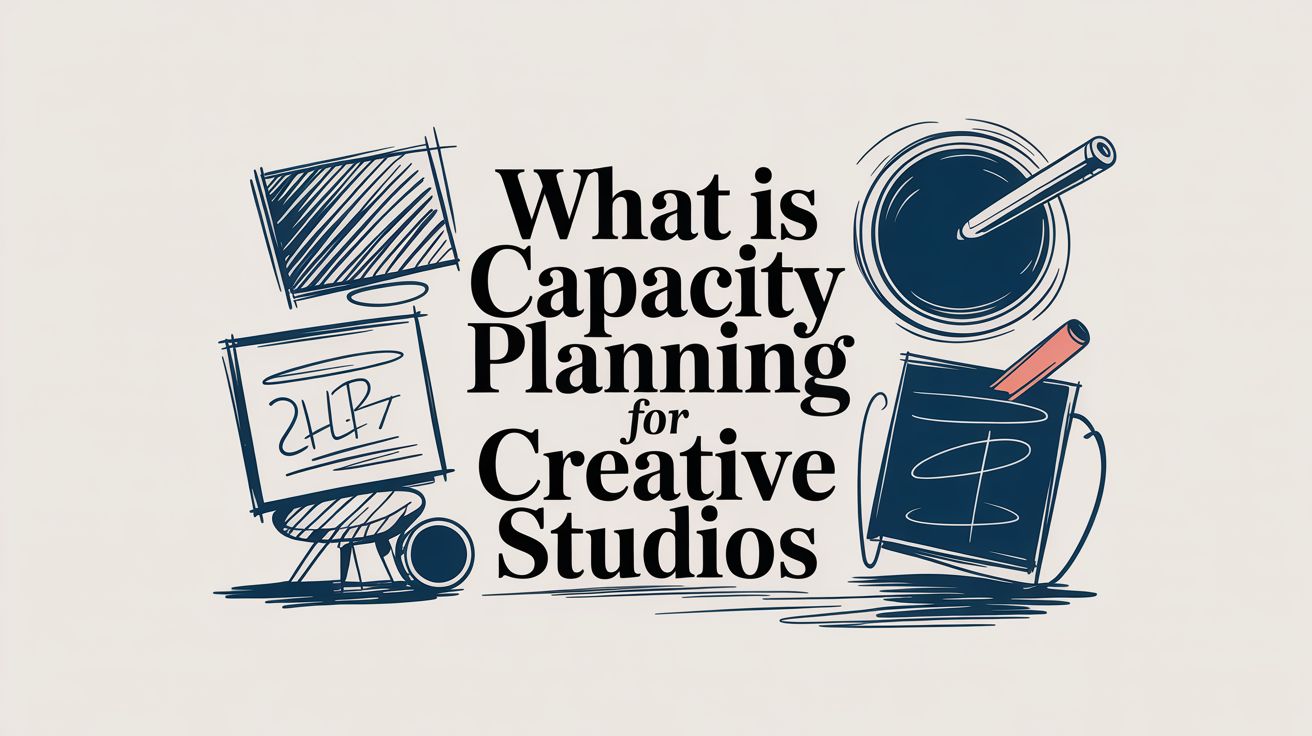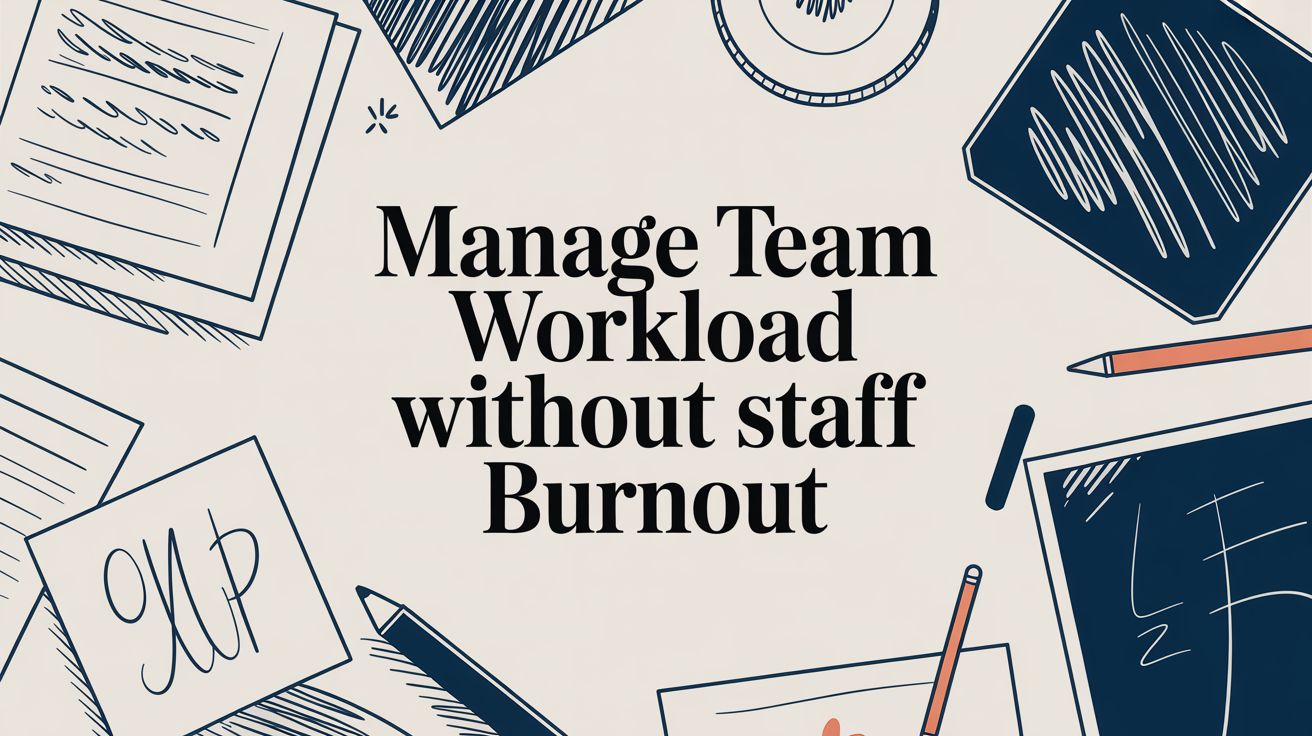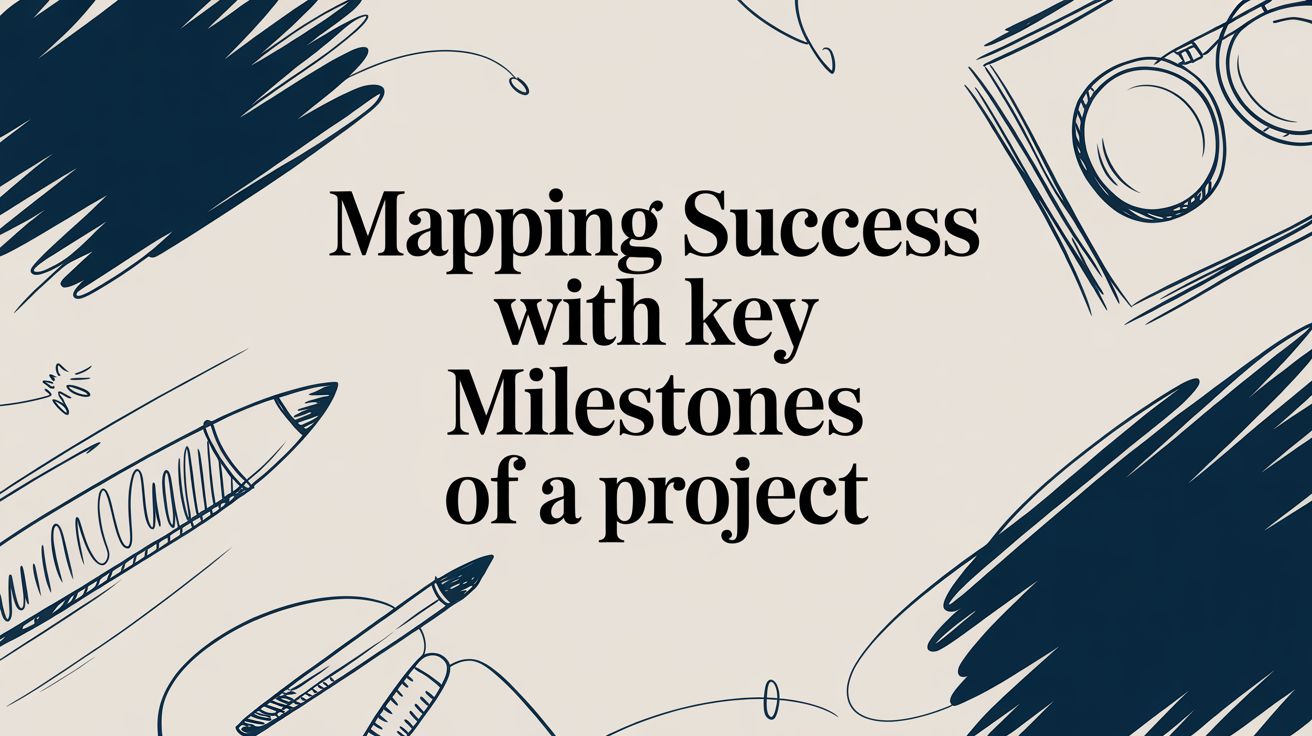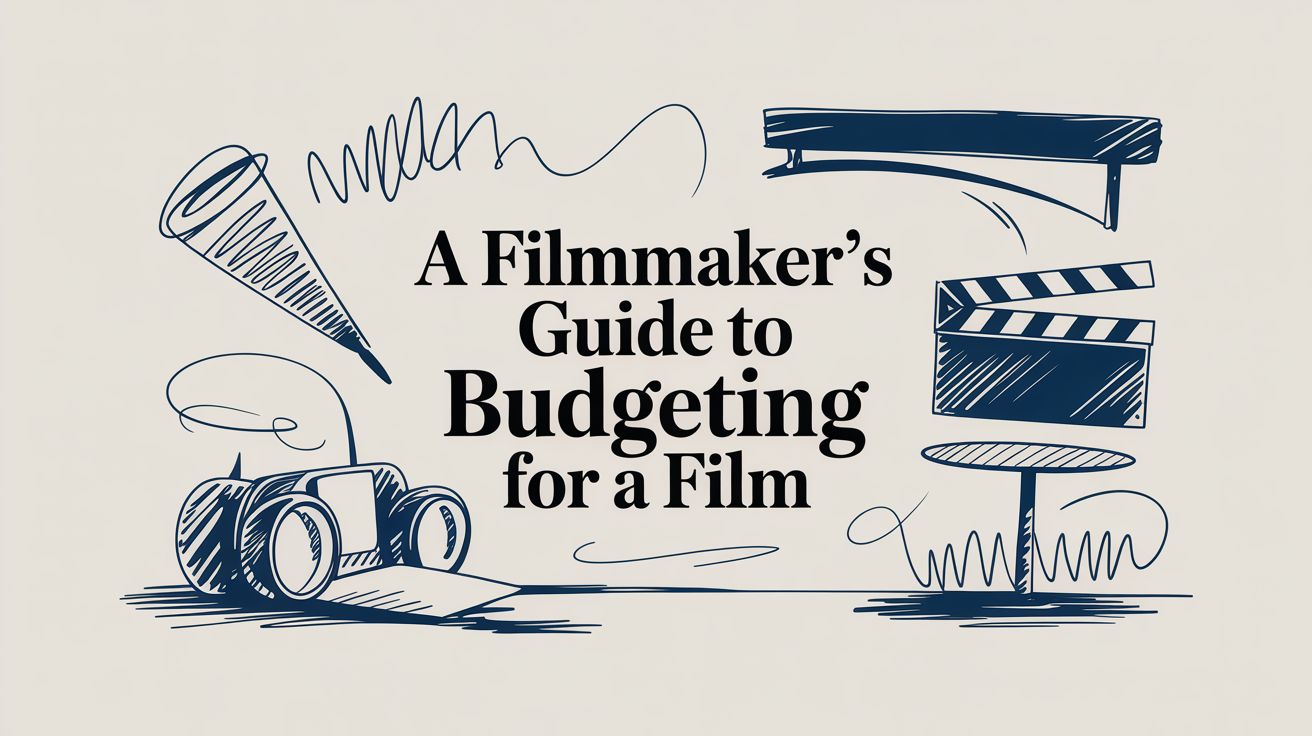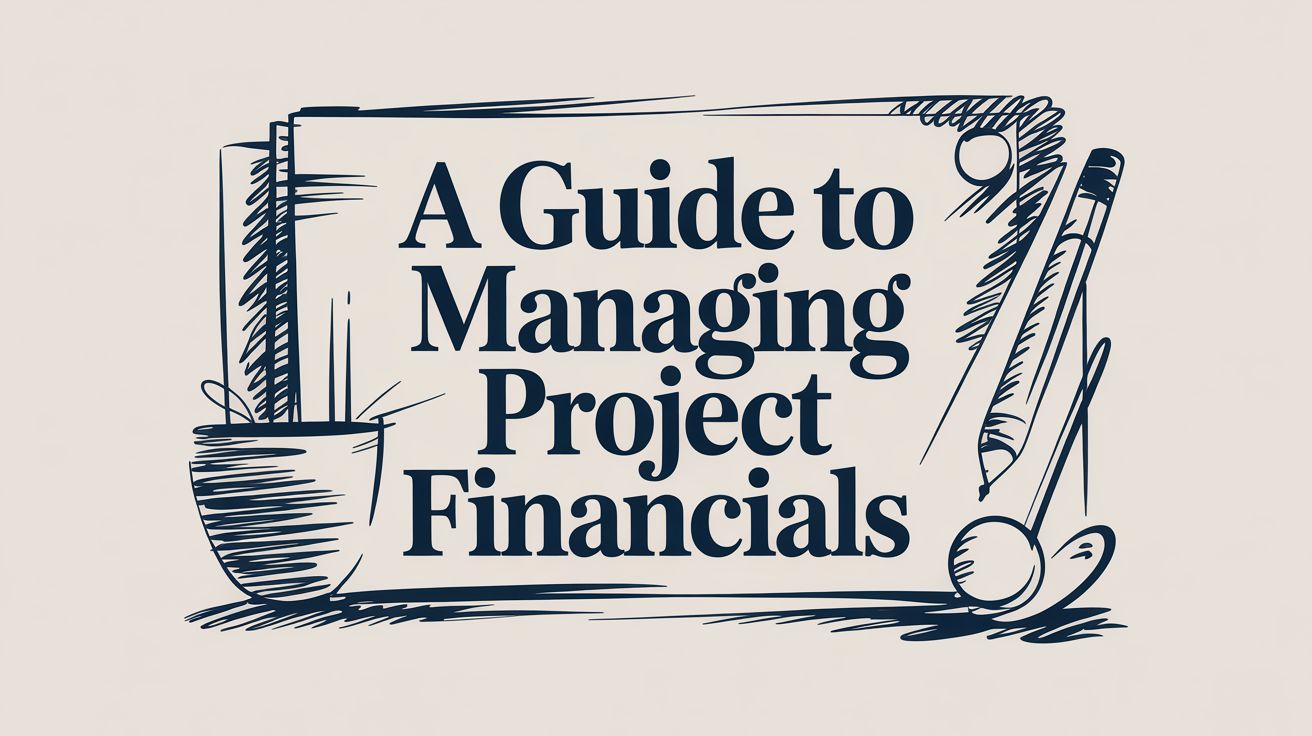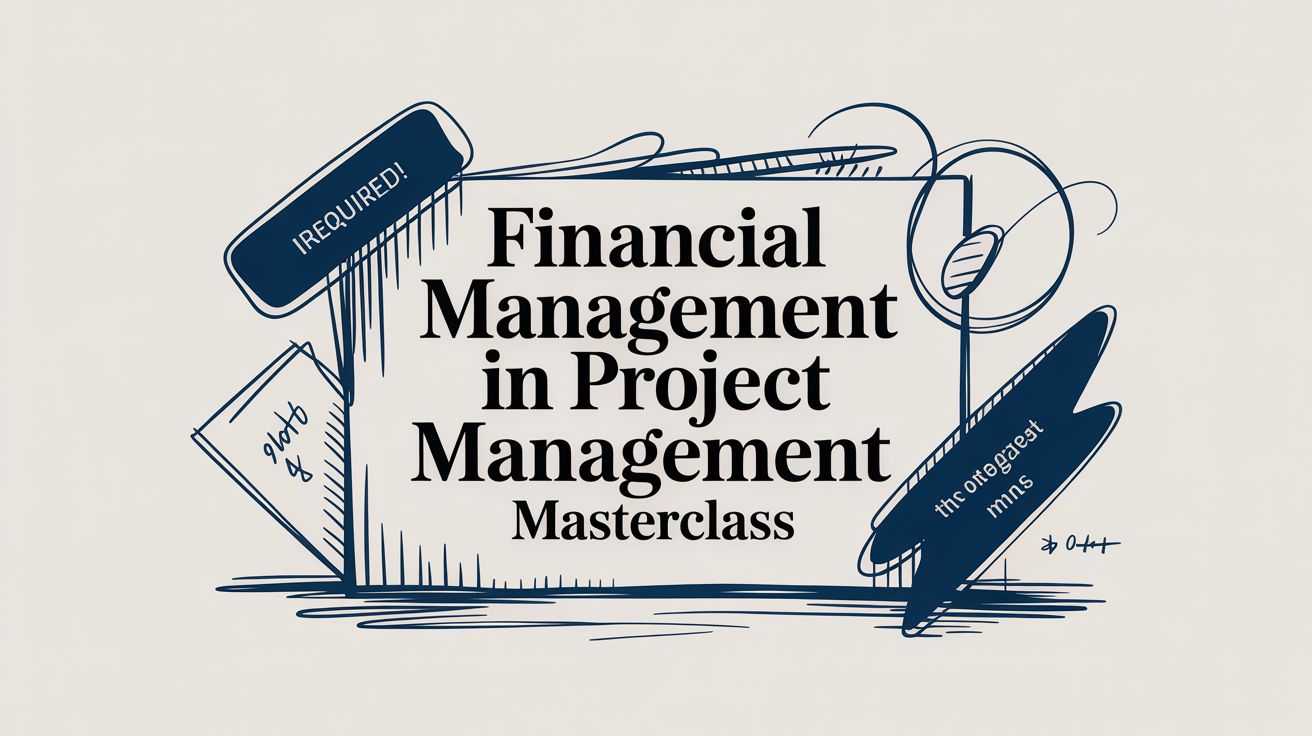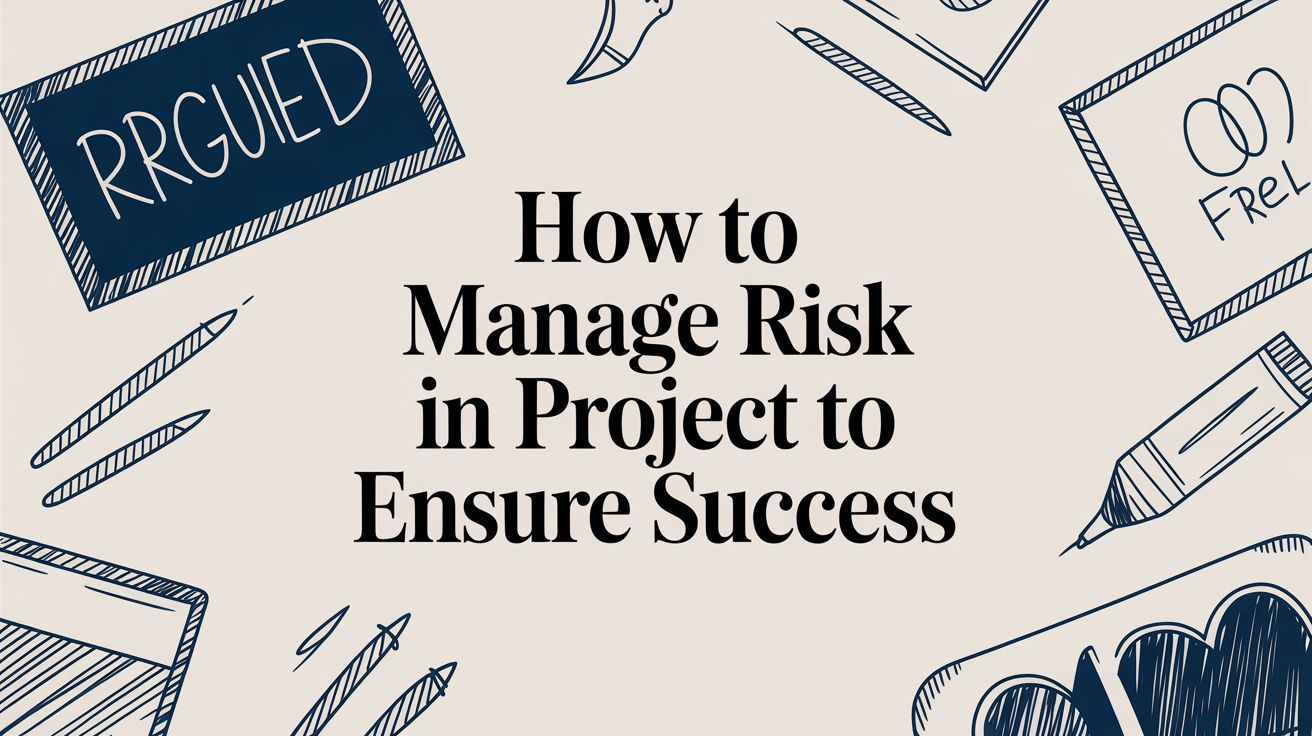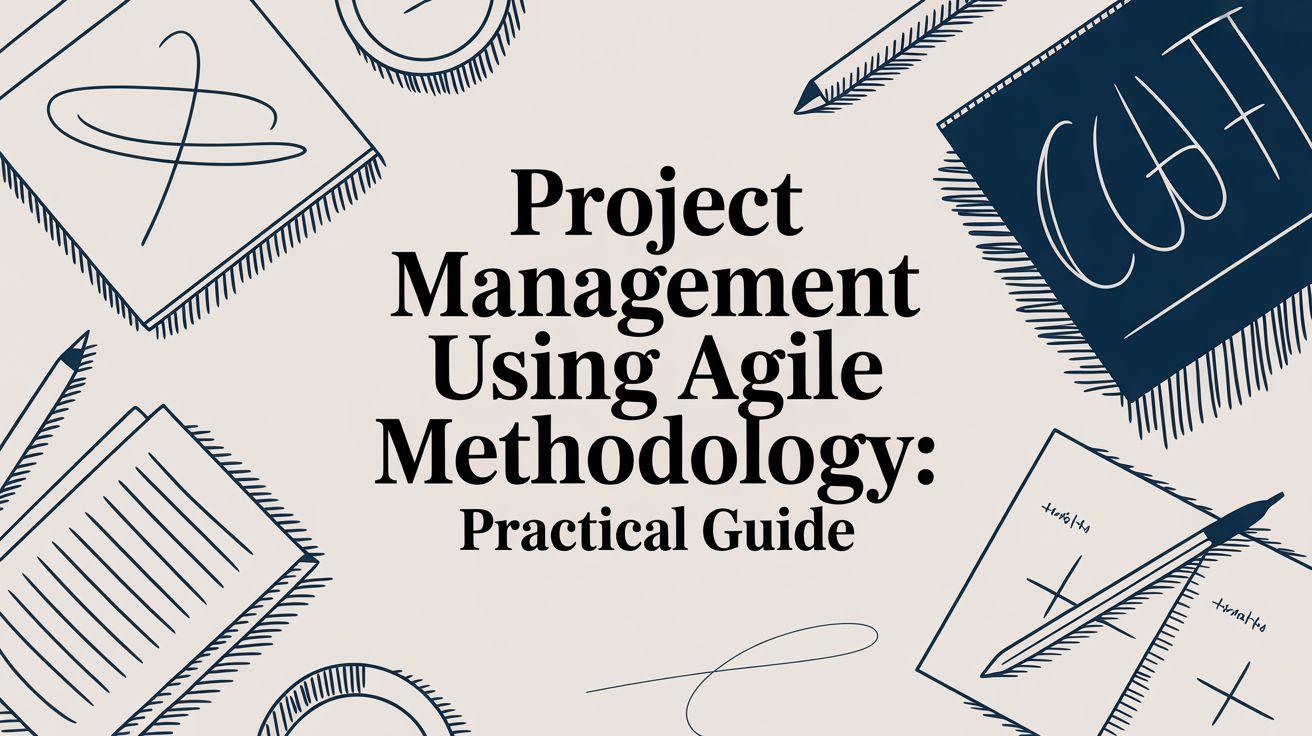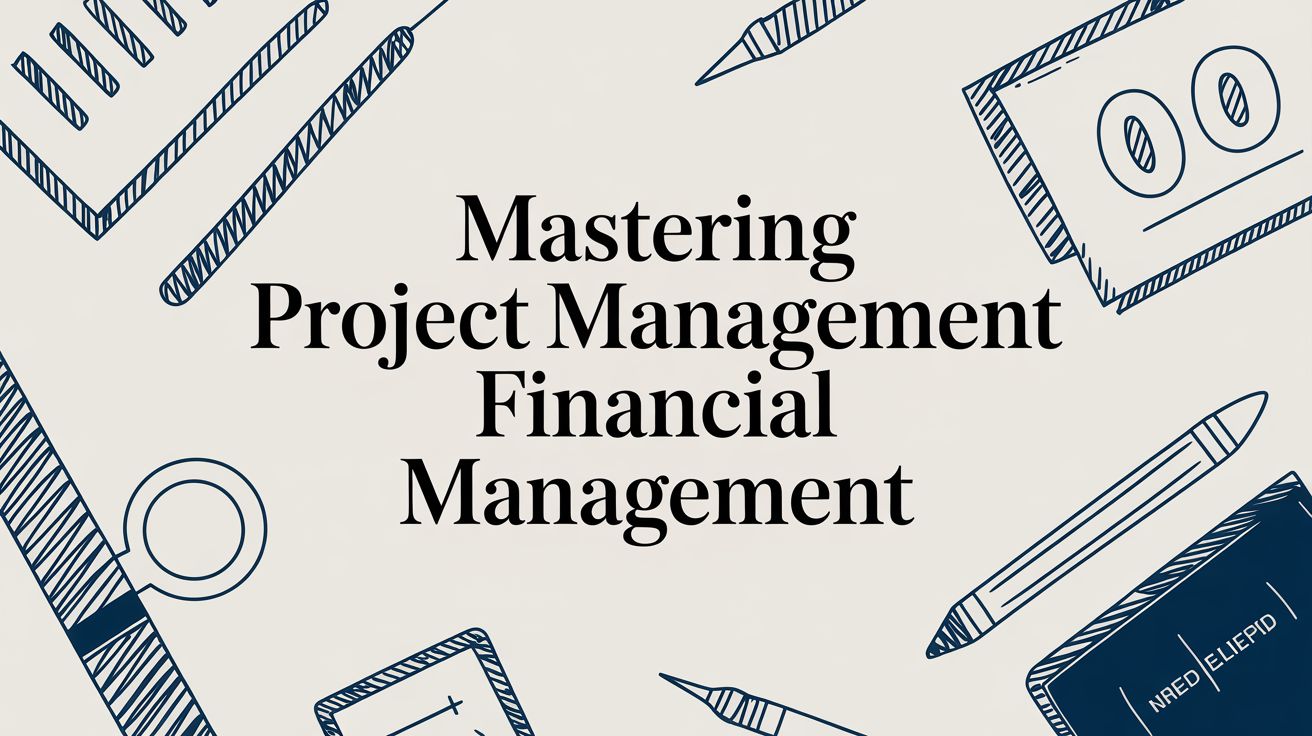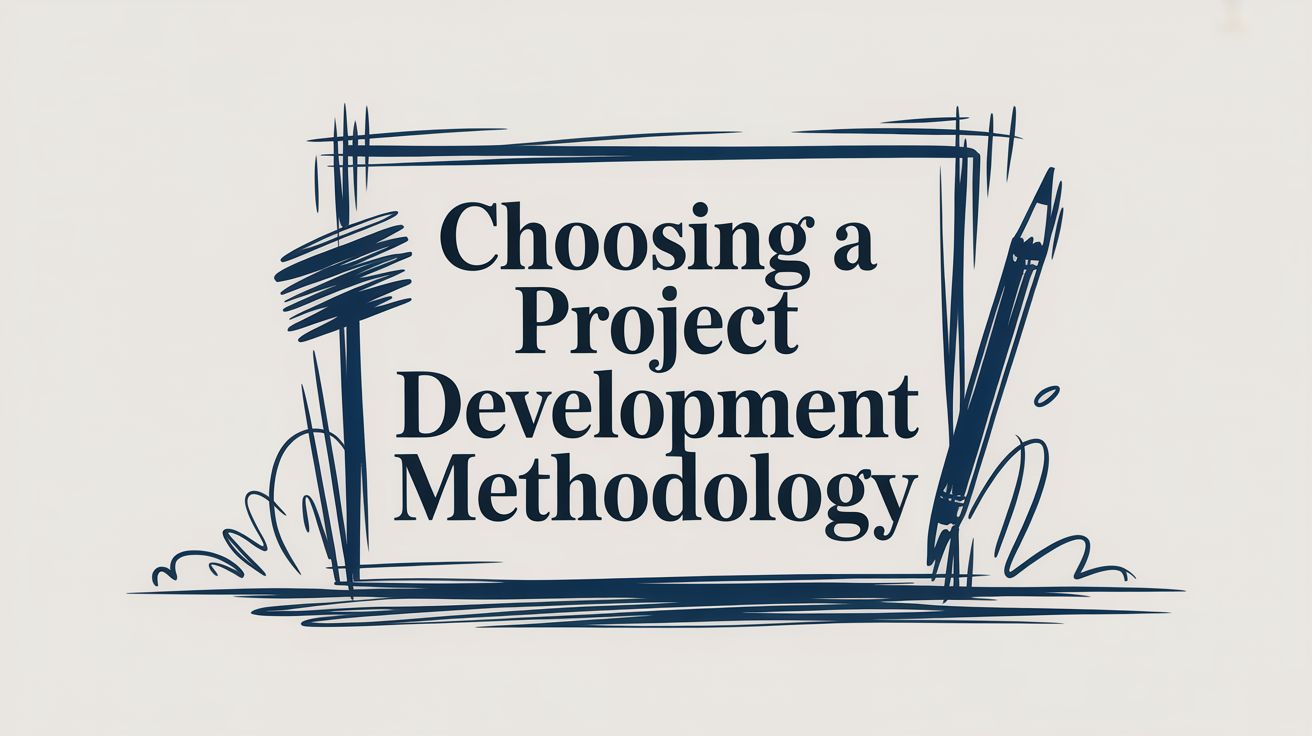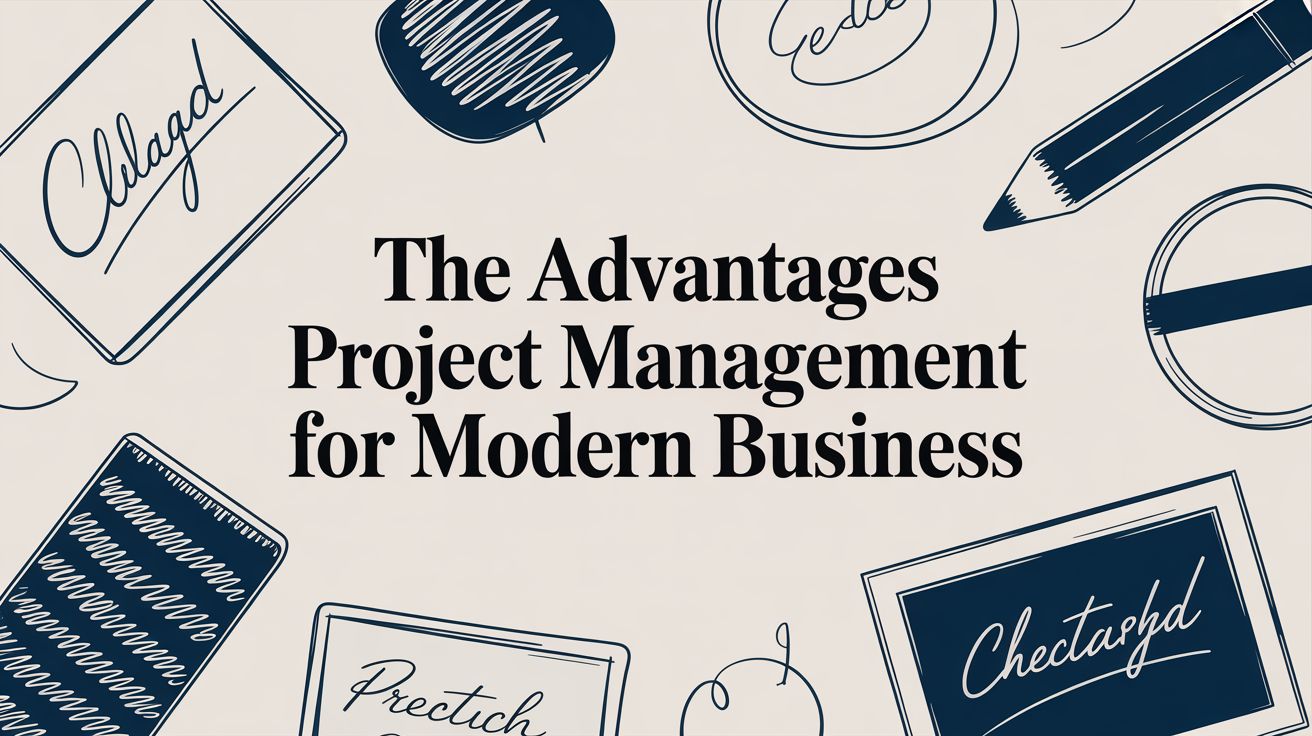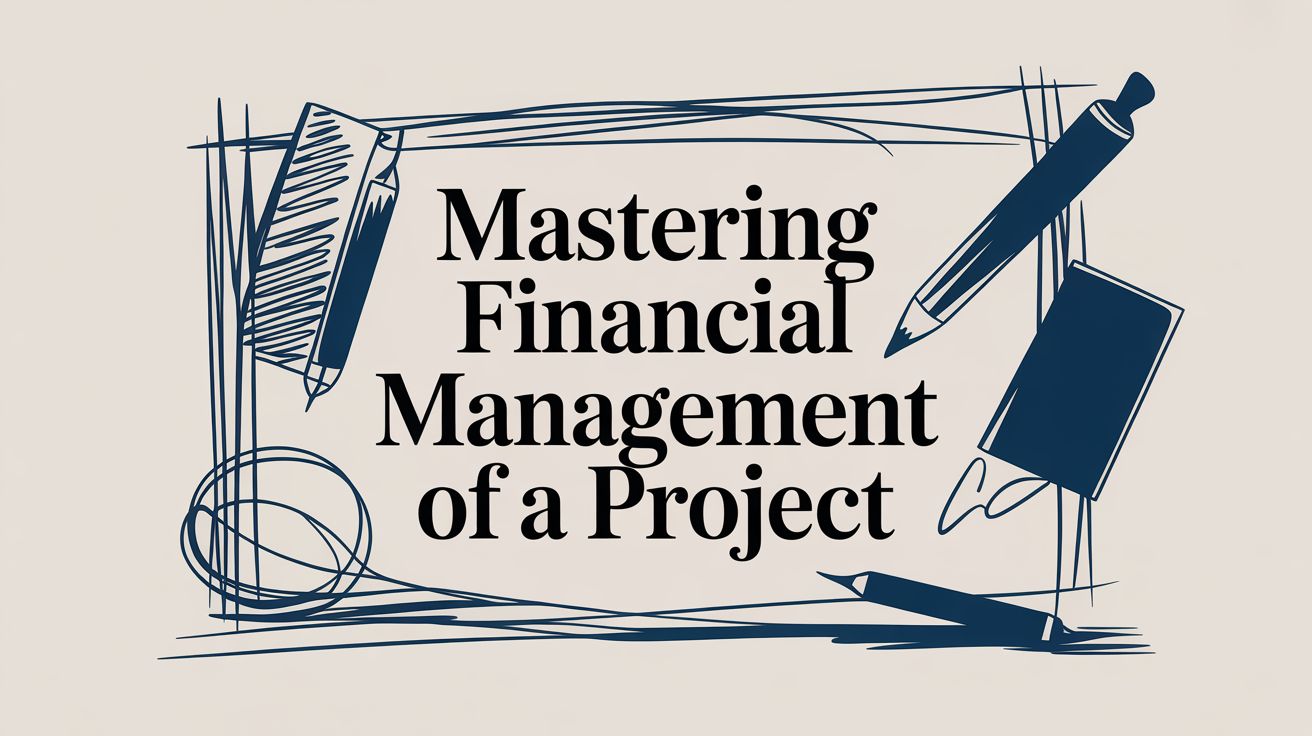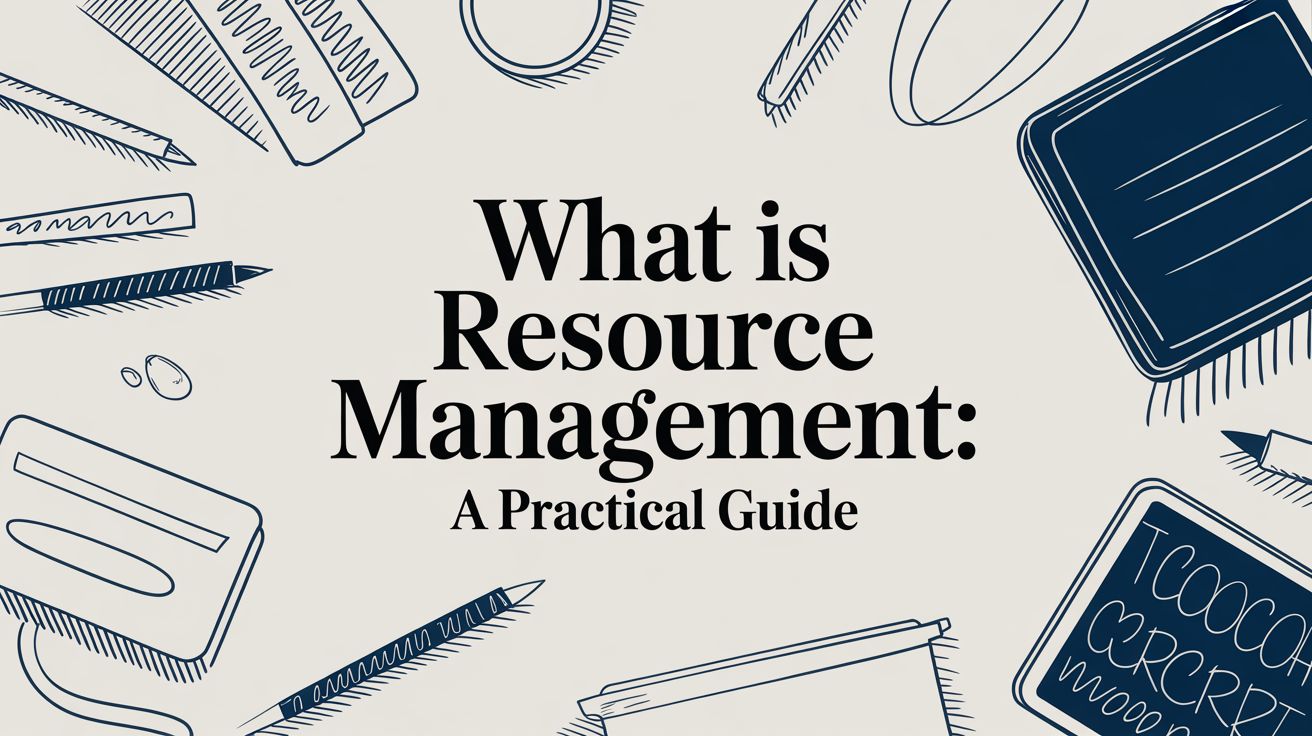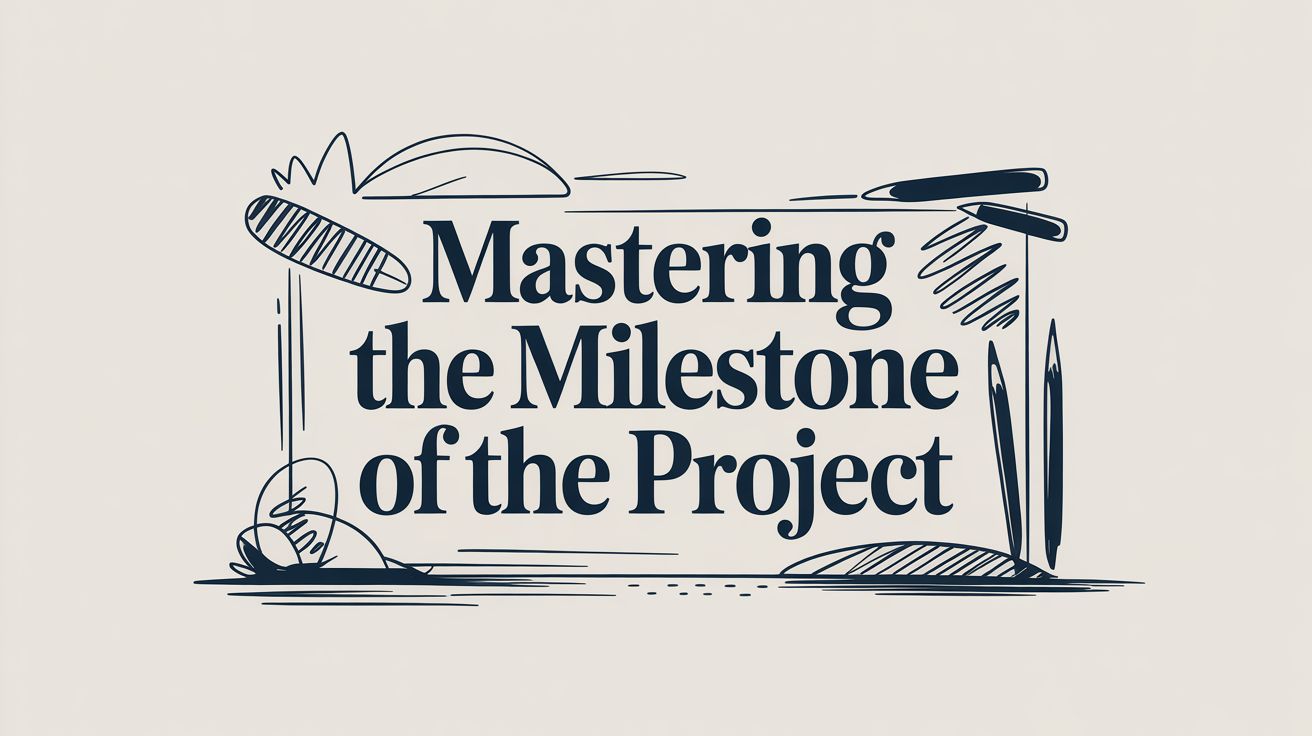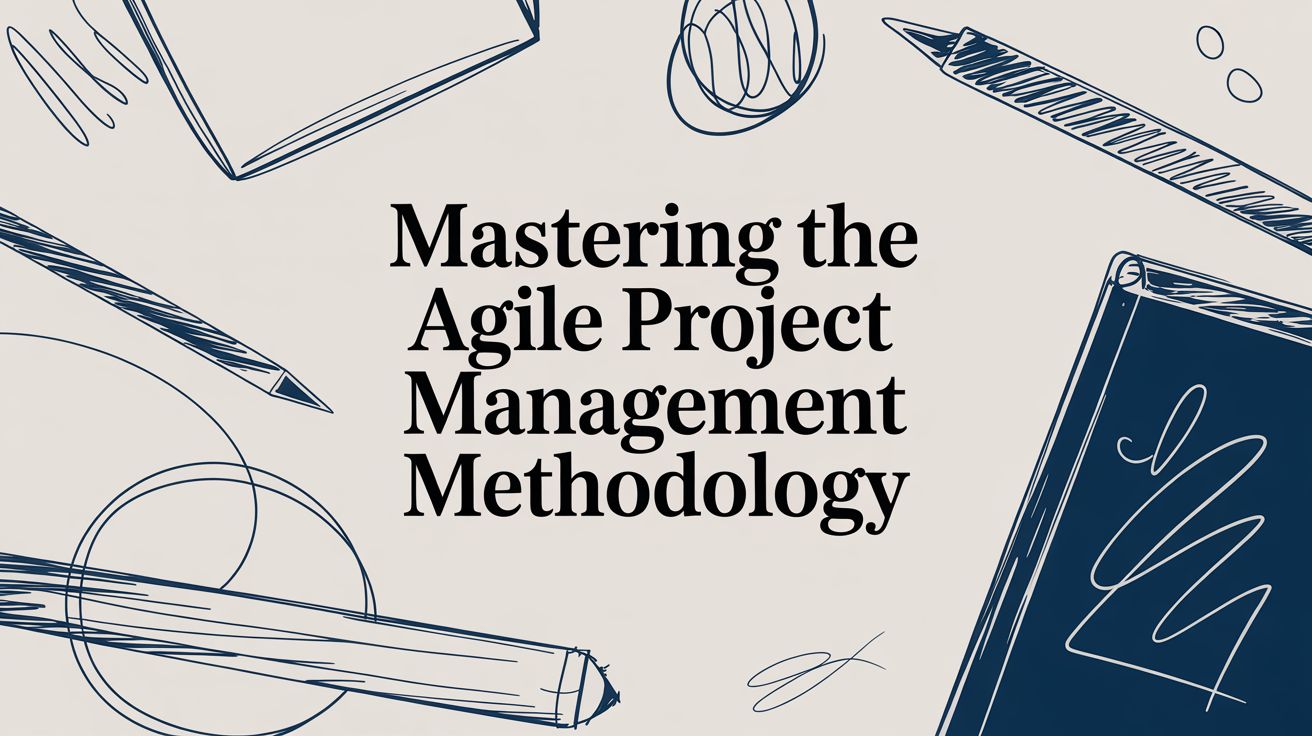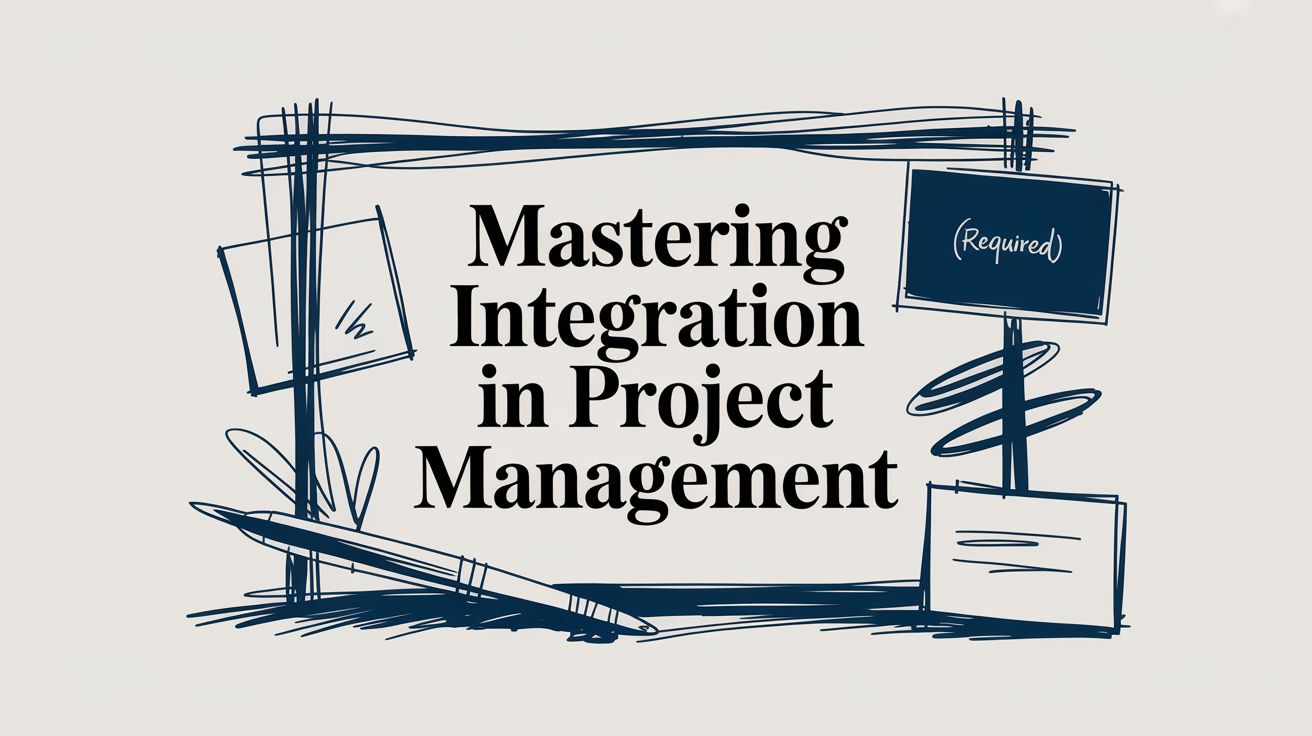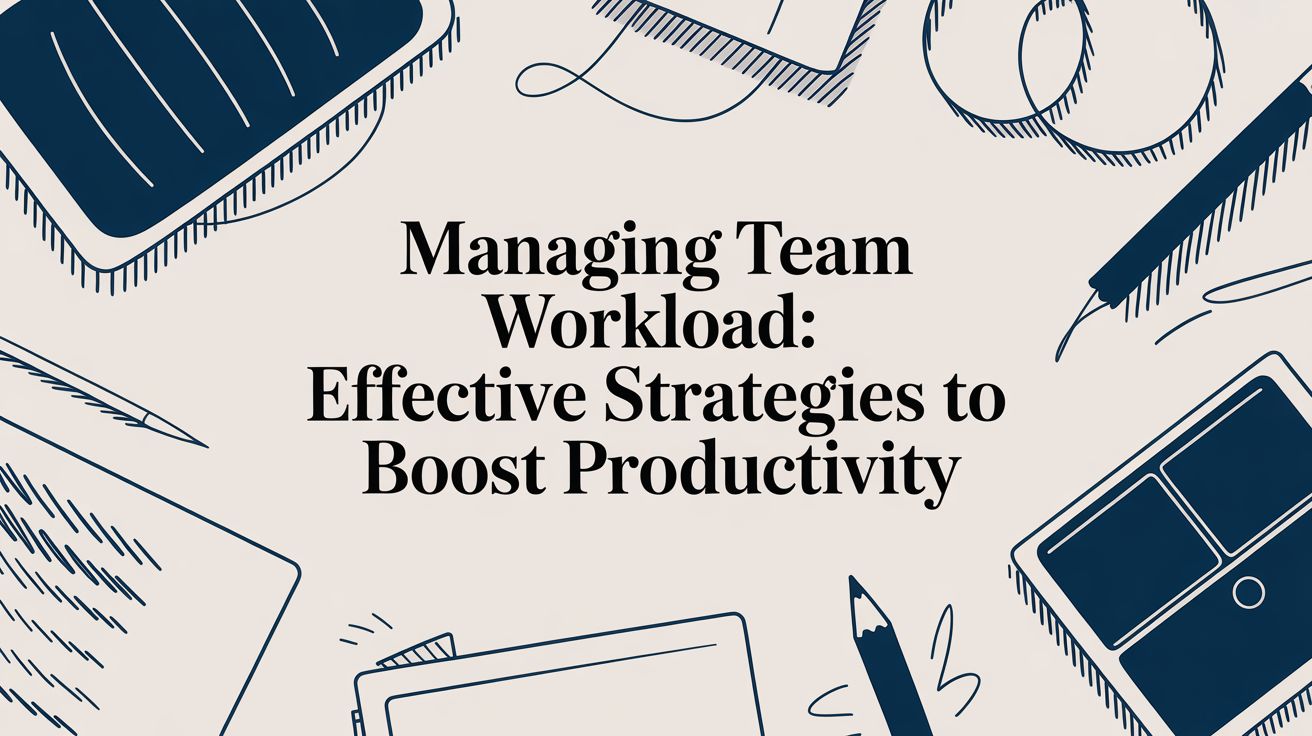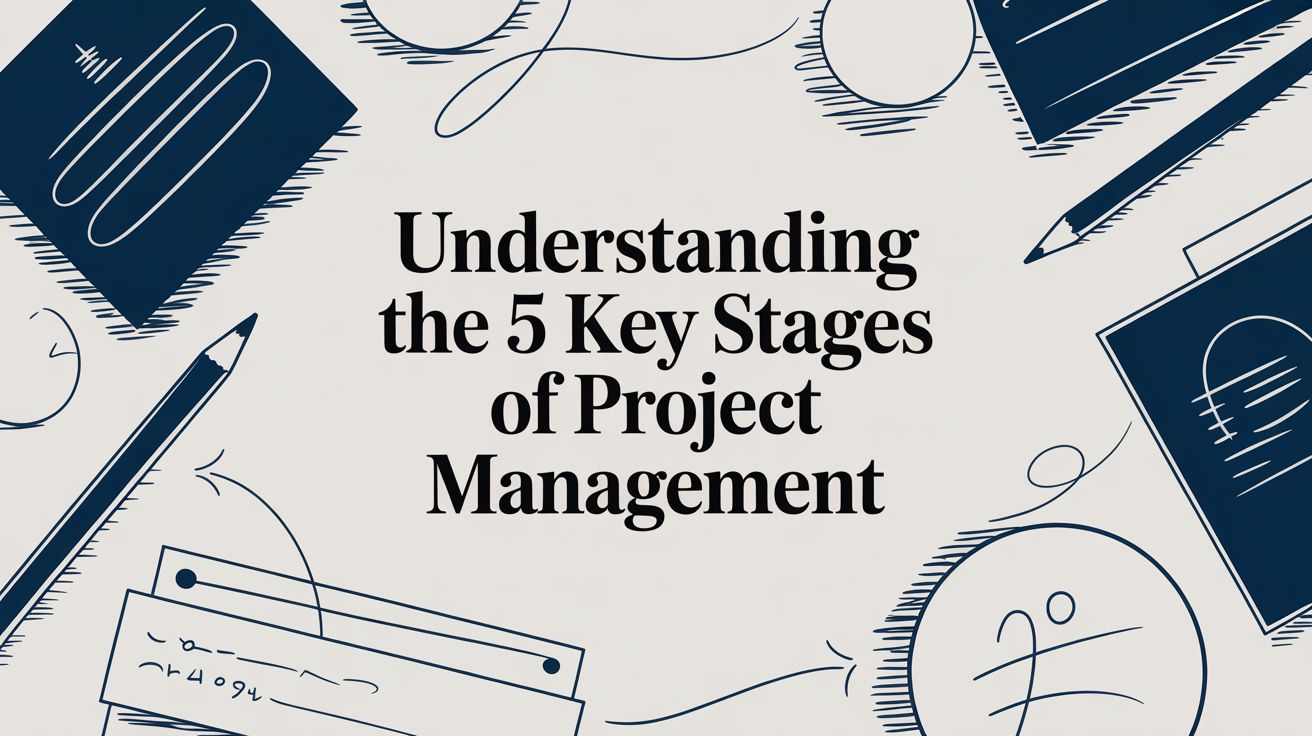At its core, a project management methodology is the specific set of rules, principles, and practices your team agrees to follow for a given project. Think of it less as a rigid textbook and more as a shared playbook. It’s the framework that guides a project from its initial spark of an idea all the way to the finish line, making sure everyone is on the same page and pulling in the same direction.
Navigating Your Project Management Options
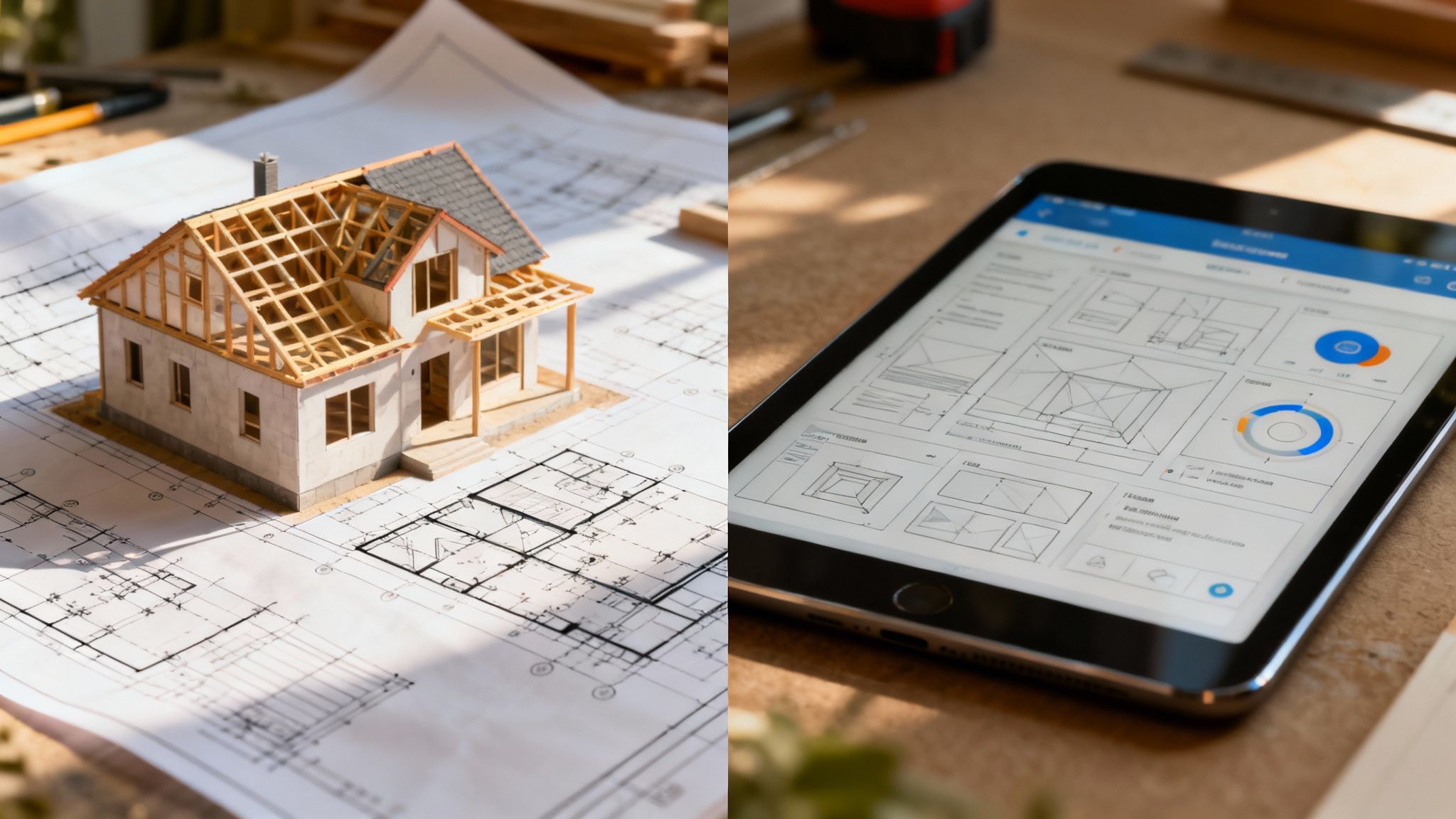
Choosing the right way to manage a project is far more than just ticking a box. It's a foundational decision that shapes how your team talks, adapts to unexpected changes, and ultimately, defines what success looks like. Without a clear approach, even the simplest projects can unravel into chaos, leading to blown deadlines and spiralling budgets. This is particularly true in a field like post-production, where countless interdependent tasks have to come together seamlessly.
The real-world value of getting this right is massive. In fact, the project management profession now contributes an estimated £186.8 billion to the UK economy every single year, a figure that's growing rapidly. It shows just how vital a structured approach has become across every industry.
Understanding the Core Approaches
When you strip them down, most project management methodologies fit into one of two main camps. To make sense of this, let’s imagine two very different projects: one is building a house, and the other is creating a new mobile app.
- Predictive (Waterfall): To build the house, you need a complete architectural plan before anyone picks up a hammer. Every single stage—laying the foundation, putting up the frame, installing the plumbing—has to happen in a strict, unchangeable order. This is the essence of a predictive model, like the classic Waterfall method.
- Iterative (Agile): For the mobile app, you’d probably launch a simple first version to see what users think. Based on their feedback, you'd then add new features in short, focused bursts of work. This flexible, feedback-driven cycle is the heart of Agile thinking, which includes methods like Scrum and Kanban.
These systems are effectively powerful decision making frameworks that provide a roadmap for the choices you'll make throughout a project. Getting your head around this fundamental difference is the first, most crucial step in picking the right methodology for your team. You can see how these concepts are applied by exploring the different https://freispace.com/blog/stage-of-project-management.
A methodology provides the toolkit for navigating project complexities. It’s the difference between building with a clear architectural plan versus just starting with a pile of bricks and hoping for the best.
To help you get a quick overview, the table below summarises the four main methodologies we'll be exploring.
Quick Guide to Key Project Management Methodologies
| Methodology | Core Principle | Best For | Flexibility Level |
|---|---|---|---|
| Waterfall | Linear, sequential progression; complete one phase before starting the next. | Projects with fixed requirements and a clear end-goal, like construction. | Low |
| Agile | Iterative development, continuous feedback, and flexible response to change. | Complex projects with evolving requirements, like software development. | High |
| Scrum | Time-boxed "sprints" with defined roles to complete specific chunks of work. | Fast-paced projects where adaptability and team collaboration are critical. | High |
| Kanban | Visualising workflow and limiting work-in-progress to maximise efficiency. | Teams needing a continuous flow of tasks, like support or maintenance. | Very High |
This table offers a high-level glance, but the devil is in the details. Each of these approaches has its own unique strengths and is suited for very different kinds of work.
Now, let's dive into the specifics of each one, starting with the granddaddy of them all: the traditional Waterfall model.
How the Traditional Waterfall Method Works

The Waterfall method is the granddaddy of structured project management. It’s the original, foundational approach, and its name paints a perfect picture of how it works: tasks flow downwards in one single direction, like water cascading from one level to the next.
Each phase must be 100% complete before the next one can kick off. This creates a strict, linear sequence that marches from start to finish without looking back.
Think about it like building a house. You can't start putting up the walls until the foundation is poured and completely set. You don’t frame the roof while the plumbers are still figuring out where the pipes go. You finish one major stage, sign it off, and only then do you move on to the next. That’s the core philosophy of Waterfall.
This approach lives by the old mantra: "measure twice, cut once." It demands an almost obsessive amount of detailed planning right at the start. Everything – budget, scope, timelines, and the final deliverables – is defined and locked in before a single piece of practical work begins. This makes it incredibly predictable but also very rigid.
The Distinct Phases of a Waterfall Project
While the exact labels might change from company to company, a typical Waterfall project always follows a clear, logical progression. One stage produces a specific outcome that feeds directly into the next, ensuring nothing gets missed along the way. There's no overlap here; it’s a one-step-at-a-time journey.
It’s this rigid sequence that gives Waterfall its predictability, making it a solid choice for projects where the end goal is crystal clear from day one.
Requirements Gathering: This is arguably the most critical phase of all. The project manager's job is to extract every single requirement from the client and stakeholders. The result is a hefty, comprehensive document that details every feature, function, and constraint, leaving absolutely no room for interpretation.
System Design: With the requirements set in stone, the team gets to work designing the system. This is usually split into two parts: a high-level logical design (the blueprint) and a low-level physical design (the detailed schematics). Every nut and bolt of the project is planned out here.
Implementation: Now, the actual "building" begins. Based on the incredibly detailed design documents, developers start writing code, editors start cutting footage, or VFX artists begin creating assets. It's all about execution.
Testing and Verification: Once the build is complete, the quality assurance team takes over. They rigorously test the product against the original requirements document, hunting for bugs, glitches, or anything that doesn’t match the initial plan.
Deployment: After passing every test with flying colours, the project is delivered. This could mean launching a new app, handing over a finished film print to a distributor, or going live with a new website.
Maintenance: The final phase is all about ongoing support. The team handles any issues that pop up after launch, releases patches or updates, and generally ensures the product keeps working as intended long after the initial delivery.
When to Choose the Waterfall Method
Waterfall's rigidity is both its greatest strength and its most significant weakness. Because it can’t easily adapt to change, it's a terrible fit for projects where requirements are expected to shift and evolve. But in some situations, that rigid structure is exactly what you need.
This method shines when a project has:
- Fixed and Stable Requirements: The scope is fully understood and isn’t going to change.
- A Clear End Goal: Everyone on the team knows exactly what the final product should look like and how it should function.
- Predictable Timelines: The linear, step-by-step process makes it much easier to estimate project duration and costs with a high degree of accuracy.
For instance, constructing a skyscraper is a classic Waterfall project. In post-production, a task like creating a final DCP (Digital Cinema Package) for a theatrical release is a perfect candidate. The deliverables are known, the technical specs are fixed, and the steps are sequential. There’s simply no room for deviation.
Waterfall provides a powerful framework for projects where certainty and predictability are more important than flexibility. It ensures every detail is planned and documented, minimising the risk of unexpected changes derailing the entire process.
Embracing Flexibility with Agile Methodologies

While Waterfall gives you a predictable, straight-line path, many modern projects just don’t work that way. The real world is messy, and that's where Agile methodologies come in. This approach swaps out exhaustive upfront planning for something far more dynamic: adaptive, iterative progress. Think of it less like a rigid instruction manual and more like a flexible mindset built on teamwork and being able to react to change on the fly.
Imagine a sculptor starting with a huge block of marble. They don’t have a perfect, down-to-the-millimetre blueprint from day one. What they have is a vision. They chip away, step back to look, and decide where to make the next cuts, slowly but surely revealing the final form. That’s the heart of Agile—the project takes shape through short, focused cycles of doing the work and getting feedback.
Unlike Waterfall’s steady march forward, Agile works in small, repeatable bursts of activity called sprints or iterations. After each cycle, the team delivers a small, working piece of the final product. This means stakeholders get to see real progress early and often, and their feedback directly influences what happens in the next cycle. This constant feedback loop is Agile's secret weapon, especially for projects where you know the requirements are going to change.
The Core Values of the Agile Mindset
Agile was first formalised in the "Manifesto for Agile Software Development," but its principles have proven so effective they’ve spread to countless other fields, from marketing to post-production. At its core, it’s built on four foundational values that put people and results ahead of rigid processes.
In plain English, the manifesto champions:
- Individuals and interactions over processes and tools: It’s better to have great people talking to each other than to force everyone to follow a strict process or use a specific tool.
- Working software over comprehensive documentation: The priority is delivering a functional product that clients can actually use, not getting bogged down writing massive documents that might be out of date by the time you finish them.
- Customer collaboration over contract negotiation: Instead of locking everything down in a contract at the start, you build an ongoing partnership with the client, involving them throughout the entire project.
- Responding to change over following a plan: Agile accepts that change is inevitable. In fact, it builds the flexibility to adapt right into the project’s DNA.
This isn’t to say that plans and processes are useless, of course. It just means that Agile places a much higher value on the elements on the left. This way of thinking is a game-changer for navigating the unpredictable nature of creative and technical projects.
Agile is not just a process; it's a cultural shift. It empowers teams to learn and adapt as they go, ensuring the final product truly meets the client's needs, not just the initial requirements document.
How Agile Works in Practice
To put these values into action, Agile teams rely on a few key practices to stay aligned and keep things moving. A central concept is the user story, which frames a task from the perspective of the person who needs it (e.g., "As a colourist, I want to access the raw footage from a centralised server so I can start grading without delay").
Daily communication is handled through stand-ups. These are quick, 15-minute meetings where each person shares what they did yesterday, what they'll do today, and any roadblocks they've hit. It keeps the whole team in sync without getting bogged down in long, formal meetings.
At the end of every sprint, the team holds a retrospective. This is a dedicated time to look back and ask: what went well? What didn’t? And what can we do better next time? This commitment to constant improvement is a tell-tale sign of a high-performing Agile team.
Agile itself is really an umbrella philosophy. Underneath it, you’ll find specific frameworks that provide more structure, with Scrum and Kanban being the most famous. We'll get into those next, but it's crucial to first understand that Agile is the guiding mindset. It's perfectly suited for the dynamic world of post-production, software development, and any campaign where the ability to pivot quickly is what sets you apart from the competition.
A Deep Dive into Scrum and Kanban Frameworks
While Agile gives us the big-picture philosophy of being flexible and iterative, its real power comes alive through specific frameworks. Two of the most popular and effective methodologies under the Agile umbrella are Scrum and Kanban. And while they both share that Agile DNA, they take very different roads to get the work done.
To really get the difference, let’s imagine you're running a high-end restaurant kitchen.
Scrum is like prepping for a massive, multi-course wedding banquet. The menu is set beforehand, and the kitchen team works in intense, focused bursts (we call these sprints) to perfect each course before the next is due. It’s structured, it’s time-bound, and it’s all organised around delivering a specific set of dishes.
Kanban, on the other hand, is more like a continuous sushi conveyor belt. Dishes are made as orders come in, placed on the belt, and sent out to customers in a constant, efficient flow. The focus isn't on one big delivery, but on optimising the entire process—from order to plate—to keep a smooth, steady stream of output.
Both get the food served, but their structure, pace, and focus are worlds apart. Let's break down what makes each one tick.
The Structured World of Scrum
Scrum is a framework that thrives on structure. It uses fixed-length iterations, usually lasting two to four weeks, to deliver a potentially shippable chunk of work. This highly organised rhythm is guided by very specific roles, events, and artefacts.
Key Roles in a Scrum Team:
- Product Owner: This person is the voice of the customer and stakeholders. They own and manage the Product Backlog—a prioritised to-do list for the entire project—making sure the team is always focused on what delivers the most value.
- Scrum Master: Don't think of them as a traditional project manager. The Scrum Master is a facilitator, a coach. Their job is to clear roadblocks, shield the team from distractions, and make sure everyone is sticking to the Scrum framework.
- Development Team: This is the cross-functional, self-organising group of professionals who roll up their sleeves and do the actual work of building the product during a sprint.
This infographic gives a fantastic side-by-side look at the core elements that separate Scrum and Kanban.
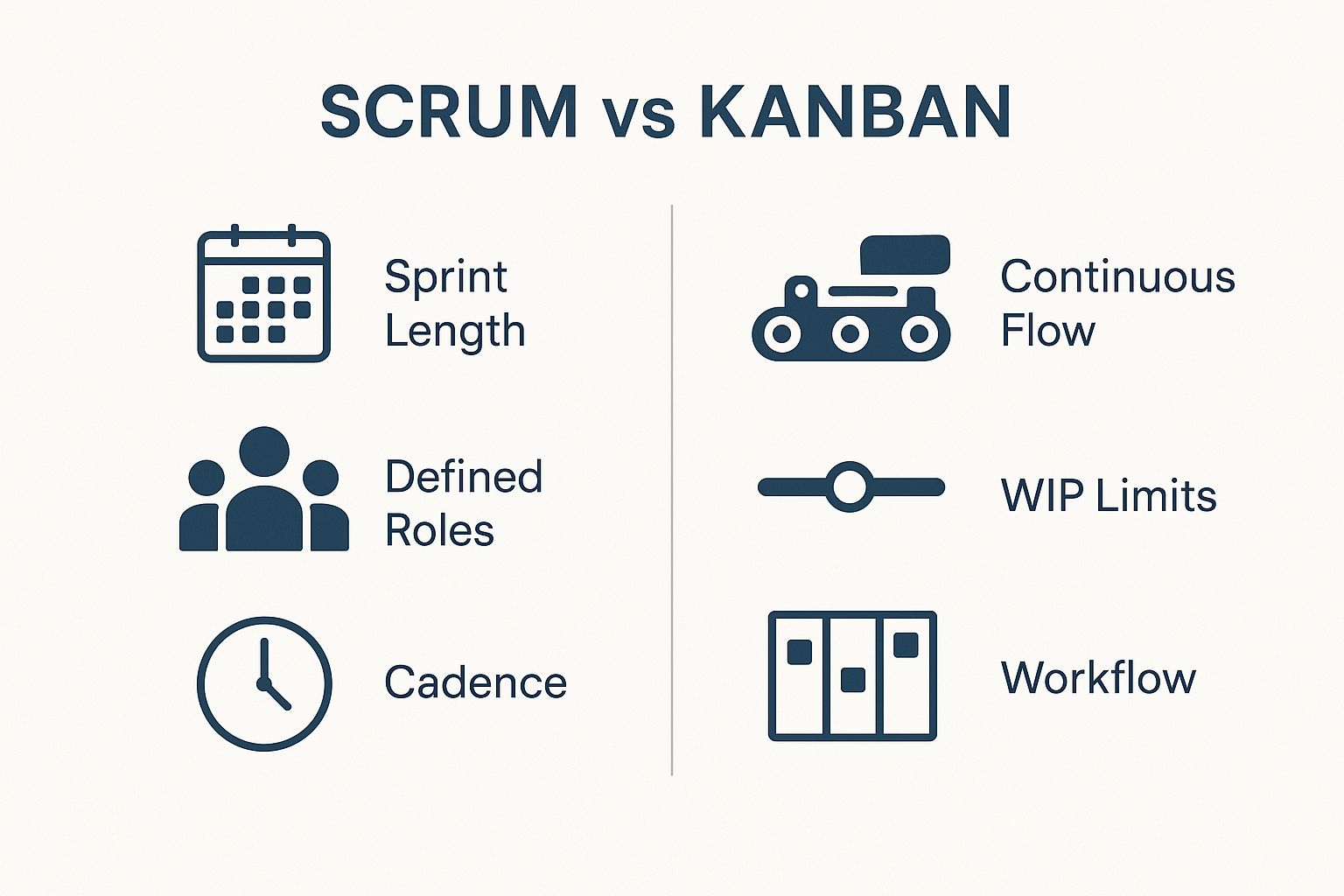
As you can see, it clearly highlights Scrum's focus on defined roles and time-boxed sprints, contrasting it with Kanban's emphasis on continuous flow and workflow limits.
The Fluid Workflow of Kanban
Kanban is a far less rigid method, focusing almost entirely on three things: visualising your work, limiting work in progress (WIP), and maximising the flow of that work. There are no mandatory roles or fixed sprints. The heart and soul of Kanban is the Kanban board.
This board is a simple visual representation of your workflow, usually broken into columns like 'To Do', 'In Progress', 'Review', and 'Done'. Tasks, shown as cards, travel from left to right across the board as they get completed.
The main goal of Kanban is to find and eliminate bottlenecks. By setting limits on how many tasks can be in any single column (the WIP limit), teams can instantly spot where work is piling up. This allows them to swarm the problem and get things flowing smoothly again.
This approach gives you incredible flexibility. A post-production team handling ongoing sound design, for example, could use Kanban to manage a steady stream of tasks without being boxed in by a rigid sprint schedule. New tasks are just added to the 'To Do' column and pulled into the workflow as soon as there's capacity. To see how different workflows are managed in the real world, you can explore various examples of production schedules.
Scrum vs Kanban A Practical Comparison
So, how do these two popular project management methodologies really stack up against each other? The best way to understand is to put them side-by-side. The table below breaks down the key differences in a practical way, helping you see which might be a better fit for your team's specific needs.
| Feature | Scrum | Kanban |
|---|---|---|
| Cadence | Regular, fixed-length sprints (e.g., 2 weeks). | Continuous flow; work is pulled as capacity allows. |
| Roles | Prescribed roles: Product Owner, Scrum Master, Development Team. | No prescribed roles; teams are encouraged but not required. |
| Key Metrics | Velocity (work completed per sprint). | Lead Time and Cycle Time (time to complete a task). |
| Change | Changes are discouraged during a sprint to protect focus. | Changes can be made at any time by reprioritising the backlog. |
| Best For | Complex projects with a clear goal that can be broken into increments. | Teams with a continuous workflow and shifting priorities. |
Ultimately, picking between them comes down to your team and your work. Scrum provides a powerful structure for tackling complex projects, like a VFX pipeline, in defined stages. Kanban offers a highly adaptable system for managing a continuous flow of tasks, like ongoing marketing or client support requests.
It's also worth remembering that while these frameworks can massively improve efficiency, they aren't magic. Research shows that teams who manage their Work in Progress (WIP) closely can slash delivery times by 50% and cut defects by 75%. Yet, a staggering 47% of Agile projects still hit delays or go over budget, proving that success lies in skilled execution, not just in the framework you choose.
Adopting a Modern Hybrid Approach
Let’s be honest, sticking rigidly to one project management methodology is an old-school move. Instead of trying to shove a project into a box that doesn’t quite fit, smart teams are realising it’s far better to build a custom toolkit. This is the heart of a hybrid approach—it’s all about picking and choosing the best bits from different methodologies to create something that actually works for your specific project.
Think of a mechanic getting ready for a tricky engine job. They wouldn't just grab a wrench and hope for the best. They'd lay out all their tools and pick the right one for each specific task. A hybrid model applies that exact same logic to project management, blending the strengths of different frameworks to deal with all the different phases of a single project.
This pragmatic way of working accepts that most projects aren't purely predictable or purely chaotic; they usually have a bit of both. A hybrid model gives you the freedom to match the right technique to the right part of the job.
Blending Structure with Flexibility
One of the most popular hybrid combinations marries the detailed, upfront planning of Waterfall with the iterative, flexible cycles of Agile. It's a powerful mix that gives you a solid foundation while keeping you nimble enough to handle the inevitable curveballs that crop up along the way.
Take a post-production house working on a feature film, for example. The initial stages—client negotiations, budget sign-offs, and locking in the final delivery schedule—are perfect for a Waterfall approach. These are big, predictable milestones that need to be set in stone from the outset.
But once the creative work kicks off, things need to get more fluid.
- VFX and Animation: These teams could work in two-week Agile sprints. This lets them deliver batches of shots for review, get instant feedback from the director, and tweak their approach without throwing the whole schedule into chaos.
- Editing and Sound Design: A Kanban board might be a better fit here, letting editors and sound designers manage a constant flow of tasks. They can pull in new scenes as they become available and adapt to creative changes as they happen.
This gives you the best of both worlds: the high-level predictability that stakeholders need to see, combined with the on-the-ground adaptability that creative teams need to do their best work.
Why UK Organisations Favour a Hybrid Model
This shift towards blended methodologies isn't just a fleeting trend; it’s a strategic decision backed by some telling numbers. In the UK, the use of hybrid project management has jumped from 20% in 2020 to 31.5% in 2024. This growth shows a clear preference for models that can balance solid planning with real-world flexibility, with about 73% of organisations expecting to lean on hybrid methods even more in the years ahead. You can dig into more of this data in these recent project management statistics.
It’s easy to see why it's so popular when you look at the benefits.
A hybrid model gives teams the power to be structured where it’s needed and flexible where it really matters. It’s less of a one-size-fits-all uniform and more of a tailored suit.
By combining methodologies, you can build a framework that is uniquely suited to your team’s culture and the actual challenges of your industry.
Implementing Your Own Hybrid System
Getting started with a hybrid model doesn't need to be a massive headache, but it does require a bit of thought. The key is to look at your project's lifecycle and figure out which phases need structure and which ones demand a bit more freedom.
Start by asking a few simple questions:
- Which parts of our project have fixed requirements? These are your candidates for Waterfall (e.g., the initial scope, final deliverables).
- Where are changes most likely to happen? This is where you bring in Agile principles (e.g., creative development, new feature rollouts).
- How does my team actually like to work? Don't forget to factor in your team's skills and culture when you decide which elements to blend.
The main challenge with a hybrid approach is avoiding the chaos of running two systems at once. Clear communication and well-defined handover points between the different phases are crucial for keeping things running smoothly. But when you get it right, this modern approach provides a powerful, adaptable framework that fits the unique rhythm of your projects perfectly.
How to Select the Right Methodology for Your Project
So, how do you move from theory to practice? Choosing the right project management methodology really boils down to asking the right questions. There's no single "best" option; the ideal choice is the one that fits your project’s specific DNA—its goals, your team, and the environment it operates in.
Think of it like choosing the right vehicle for a journey. You wouldn't take a sports car on a rugged off-road trail, nor would you use a massive lorry for a quick trip to the corner shop. The context dictates the tool. It's the exact same principle when the nature of your project dictates the methodology.
Key Factors to Guide Your Decision
To get started, take a hard look at your project across a few key dimensions. Answering these questions will naturally point you toward the most suitable framework, whether that’s Waterfall, Agile, Kanban, or some kind of Hybrid blend.
- Scope Flexibility: Is the project scope completely locked in from the start? Or do you expect it to evolve as you learn more? A fixed scope points directly to Waterfall, while an evolving one is a perfect match for Agile.
- Project Complexity: Are the tasks straightforward and sequential? If so, Waterfall provides brilliant clarity. For complex problems full of unknown variables, Agile’s iterative nature is a lifesaver, allowing you to discover and adapt as you go.
- Stakeholder Involvement: How often do you need feedback from your client or key stakeholders? If the answer is "constantly," Agile is the clear winner. If you only need sign-offs at major milestones, Waterfall can do the job just fine.
- Risk Tolerance: How much uncertainty can the project handle? Waterfall tries to stamp out risk with extensive upfront planning. In contrast, Agile embraces it, using short cycles to tackle risks in small, manageable chunks.
Choosing a methodology isn't just a procedural step; it's a strategic decision that directly impacts your project's outcome. It defines how your team communicates, handles change, and ultimately, achieves success.
Applying It to a Post-Production Scenario
Let's ground this with an example. Imagine a post-production studio working on a new feature film.
The pre-visualisation department might absolutely thrive using Scrum. They can work in short sprints to deliver animated sequences, get immediate feedback from the director, and iterate quickly on the visuals.
But jump over to the final colour grading and mastering department, and you'll likely find them using Waterfall. Their requirements are rigid, the technical specs are non-negotiable, and the process is completely linear. One step must follow the other. This shows how even within one massive project, different methodologies can be the right choice for different teams.
Of course, efficiently allocating your staff across these varied workflows is a challenge in itself, which really underscores the importance of understanding what is resource planning.
Once you've settled on the right approach, finding the software to back it up is the next critical step. It's well worth exploring the various project management tools out there to give your team the support they need.
Got Questions? We've Got Answers
Diving into the world of project management can bring up a few recurring questions. It's completely normal. Getting your head around these key ideas will help you feel much more confident when picking the right approach for your team. Here are some quick, straight-to-the-point answers.
Methodology vs. Framework: What's the Real Difference?
You’ll often hear these two terms thrown around as if they mean the same thing, but they don't. Think of a methodology as the grand philosophy—the complete system of beliefs and practices, like Waterfall or Agile. It’s the big-picture 'why' and 'how'.
A framework, on the other hand, is a specific set of tools and rules you use to actually do the work based on that philosophy. Scrum and Kanban, for example, aren't methodologies in their own right; they're frameworks that give you a structure for putting the Agile methodology into practice.
A methodology is your overall game plan for a project. A framework is the specific set of plays you run day-to-day to execute that plan.
Which Project Management Style Is Best for Small Teams?
For smaller teams, the name of the game is flexibility and clear communication. That’s why frameworks like Kanban are often a brilliant place to start. Its visual board and focus on a continuous flow of work make it dead simple to get going without the heavy rules and ceremonies of more complex systems.
Generally, any Agile framework tends to work well. They're built for the kind of close collaboration and quick pivots that are natural strengths of a small, tight-knit crew. The goal is to pick something that supports your team, not drown it in unnecessary admin.
How Often Should a Team Change Its Approach?
Honestly? As little as possible. Switching your entire project management system is a massive deal. It means retraining everyone, overhauling workflows, and a real cultural shift. You should only even think about it when your current process is consistently failing to get the job done or causing serious headaches.
Instead of constantly jumping ship, it's far better to run regular retrospectives. This lets your team figure out what’s not working and make small, continuous tweaks to the system you already have—which, funnily enough, is a core idea of Agile itself. Real progress comes from refining your process, not always replacing it.
Ready to bring a powerful and intuitive project management solution into your post-production workflow? freispace is built from the ground up for the unique demands of creative projects, blending resource management with smart scheduling. See how you can streamline your studio's operations at https://freispace.com.

